Honeymooning in VENICE!
Ciao punctuations, lots of boating, and the art of turning a dead-end into a piece of magic.
❥ This email may be truncated in your inbox. To make sure you are reading the entire post, please move yourself along to a web browser!
All photographs and words here are my own, unless otherwise stated. More from me + Absolument can be found in these places:
Website | Instagram | Book Recs Merci, thank you tons and tons for reading!
Jean-baptiste and I married in June here in France (!) and decided to delay our honeymoon a bit so that we could feel greatly spoiled twice in the same year.
I had never been to Italy, and he had only seen Milan, so we were itching to discover our neighboring country together. Originally, I had planned for us to roadtrip around Florence, Rome, and Cinque Terre, but the planning was becoming a little cumbersome during an already-busy season of life.
Our favorite way to travel is to book the transportation and sleeping points, plus have a few loose ideas of historic places to visit (mostly: do we need to book tickets for these activities ahead of time?), and then we show up and just…be. Of course, we love recommendations from people we trust, but mostly, we want to be in tune with the people around us and to spontaneously dip into whatever parts of the culture are pulling at us the most while we’re there. We decided to pivot and spend the whole week in Venice instead—one Airbnb in San Marco and a couple of nights on the island of Burano. I’ll admit that I was sad to be leaving the hypothetical Rome/Florence trip behind, and I was fearful that Venice would be a honeymoon cliché, plus overcrowded and touristy. I was so wrong! I’m forever marked by this part of the world.
For Venice, we had the goals of: winding through the streets, meeting dead ends of water, kissing on every bridge (without any exceptions!!!), eating from the must-try food list, and dare ourselves to get lost.
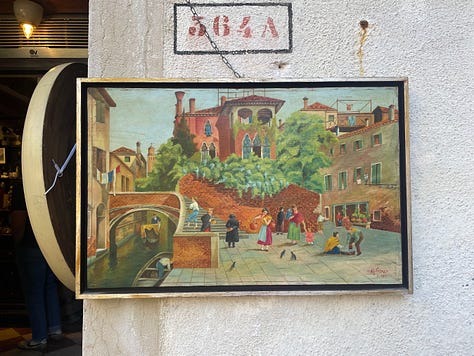
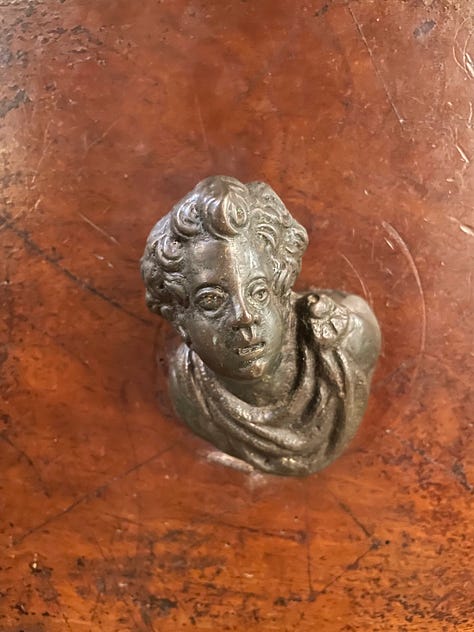
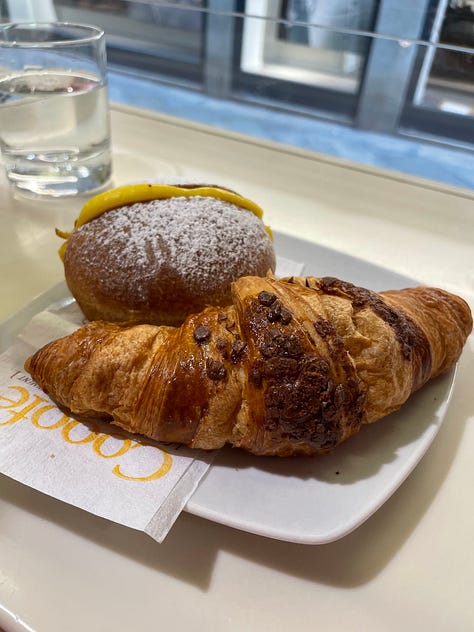
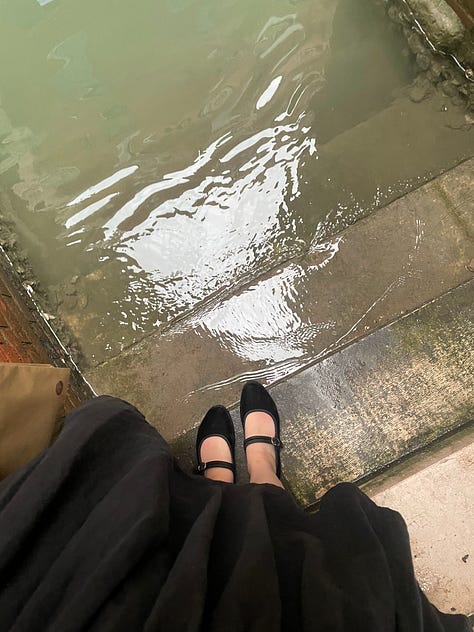
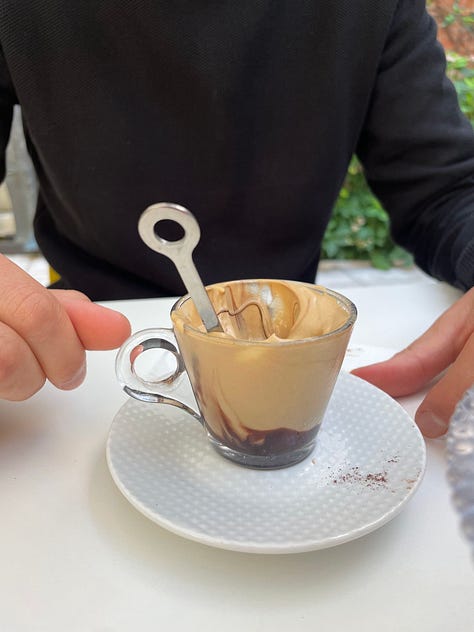
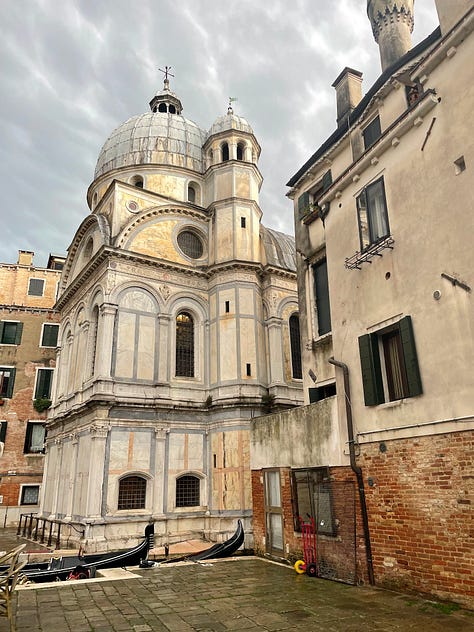
Please keep in mind that all of these words are my own perspective, mixed with some facts shared with us by locals who were kind and patient enough to answer our sometimes-bizarre questions. I am definitely not an expert on Italy, its culture, people, language, or the city of Venice! Just a new admirer with a week’s worth of lucky, personal experience. :)
The Grand Canal Entrance
Arriving at Venice’s Marco Polo airport is a mind flip of its own. Instead of walking out to the curb to catch an Uber, or hopping onto a train, you’re suddenly in line at a boating dock. I imagined us getting onto an oversized ferry, like the ones I took (and loved) a thousand times while living in Seattle. Instead, we shared a tiny, semi-enclosed, wood-paneled boat with a dozen people. A small girl no more than 8 years old practically sat on my lap. We were in complete darkness for most of the hour-long ride, as it was around 8pm. Eventually, the boat dramatically slowed and we approached the entrance of what I quickly realized was *The* Grand Canal.
While entering the city by boat at night, the Venetian lights doubled as they reflected and danced in the water. There was a particular sound the passenger boats made as they coasted along the water: an eerie hum. The sound echoed and etched itself into the mind. There was a haunting feeling when pairing this noise with the vision of darkened waters, buildings soaked with patina, and empty rooms with peculiar, glass chandeliers. The tremendously age of the city hit us, along with the presence of all of its long-gone people who once enjoyed the same water route. We looked onward at the people along the sidewalks in front of us, some dining with their bodies a few inches from the edge of the stone. The water sat perfectly level to the sidewalk, daring to soak some ankles. Everyone’s movements appeared to be in slow motion—including the pace of our boat—until we reached our Sant'Angelo stop. Our feet met the surprisingly sturdy ground of the San Marco neighborhood and we curved through the silent, narrow streets with our luggage. We saw some spotted street lamps, and even fewer people. Some words of awe escaped us along the way.
Day one: Am I already crying in a cafe?
We stepped foot in the cafe for the first time the next morning, and there were a few men standing at the counter in their cropped beige bomber-style coats. Their whitened hair was trimmed almost squarely around them, their bones solid seeming. The emotions that hit me when I saw these brief details turned me to a puddle of mush. There can be so much nostalgia buried in a place you’ve never been. And people can have places stuck in them. My Papa, for example, was so deeply Italian without me paying it any attention while he was alive. This cafe moment was the first time the world confirmed it for me. The string that connected his accent, his hairstyle, his prim clothing, the sparkle in his eyes, the tender version of his masculinity—it was sewn in him from his Italian father. He was born and raised in Ecuador speaking Spanish, but everything about him shouted Italian. I understood this now, and felt water in my eyes while eating my first delicious cornetto with jam inside cafe Marchini Time.
The cafe was simple, but marvelous. Simple because of its narrow size and the fact that it was in a public square shared with an H&M, but wonderful for many reasons that you had to pause to take note of. The pace that felt true to what I imagined from Italian culture: the double entries and double counters—standing-room only; the glass and mirrors to give illusion of expansiveness; the sparkling treats in the vitrines; the sheer vastness in the options of pastries; the coffee machines spurting liquids; the Ciao! Buongiorno! Salve! etc. ringing from the mouths of everyone; the politeness of the staff despite the slight chaos of the moment; the lack of pressure to either linger or to hurry out. We followed what we noticed others were doing, and every day it became our favorite spot to run to when we needed something savory or sweet, no matter the hour.
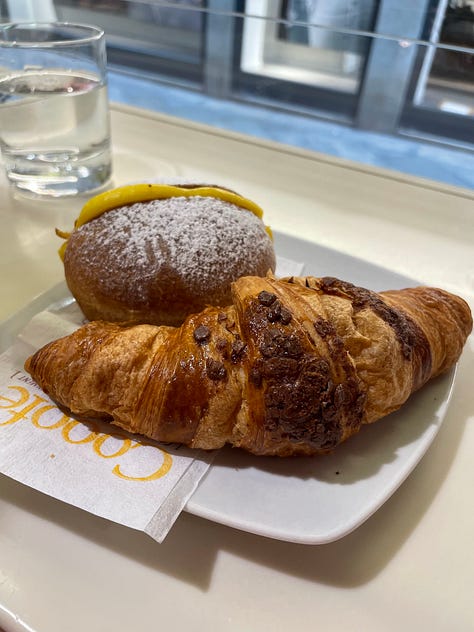
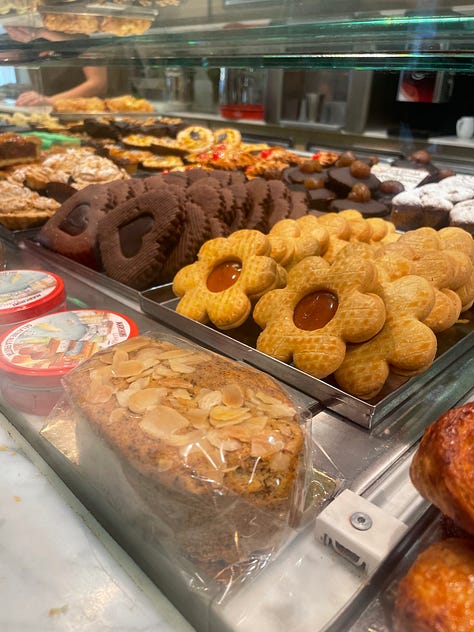
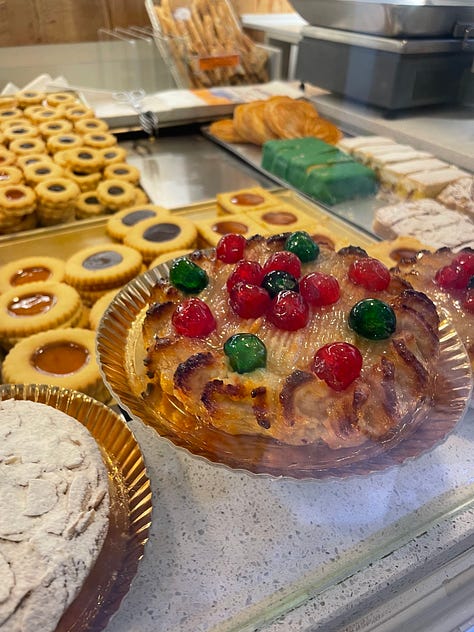
Marchini Time was also the first place where I deeply experienced the staccato feeling of the Italian language. Hearing it dance around your ears from multiple points in a room without it being from a television or radio—it was pure magic. I looked up the definition of staccato at one point while on the trip, wondering if this word that was coming to mind was the right one. Was it an accurate way to describe the musical pinpointed-ness of the consonants in the words of an Italian sentence? Like a pleasant xylophone? I think it works. After all, “Italian is a language built to be sung.”
Peggy Guggenheim’s Palazzo aka My Modern Art Heaven
One of the only tickets we bought before arriving in Venice were tickets to the Peggy Guggenheim Collection, situated in her home along the Grand Canal. Peggy and her life’s contributions to art—specifically modernism—have touched me greatly at different points of my life. [You can read about her and her palazzo in a recent Substack installment of mine.]
I read her autobiography in the weeks leading up to this trip and regrettably left off JUST before her Venice chapter began. It felt like going to a concert of a band you love, but not yet hearing any of their new album. You’re loving the experience of it SO much, but also fully aware that you’re missing some important context. Even despite this, it was one of my favorite parts of the week, and a new cherished memory.
I felt at peace in her space, and at each turn, it was a beautiful reunion with artists I’ve long admired. Hola Miró, hi Ellsworth Kelly, ciao Magritte, hello Picasso, Georges Braque—it’s nice to see you. When I rounded the corner of a particular room, my eyes met her Alexander Calder-designed bedhead. With my hands on my heart, I advanced toward it quickly: “It’s you!!!!” In small moments, life can feel astounding.
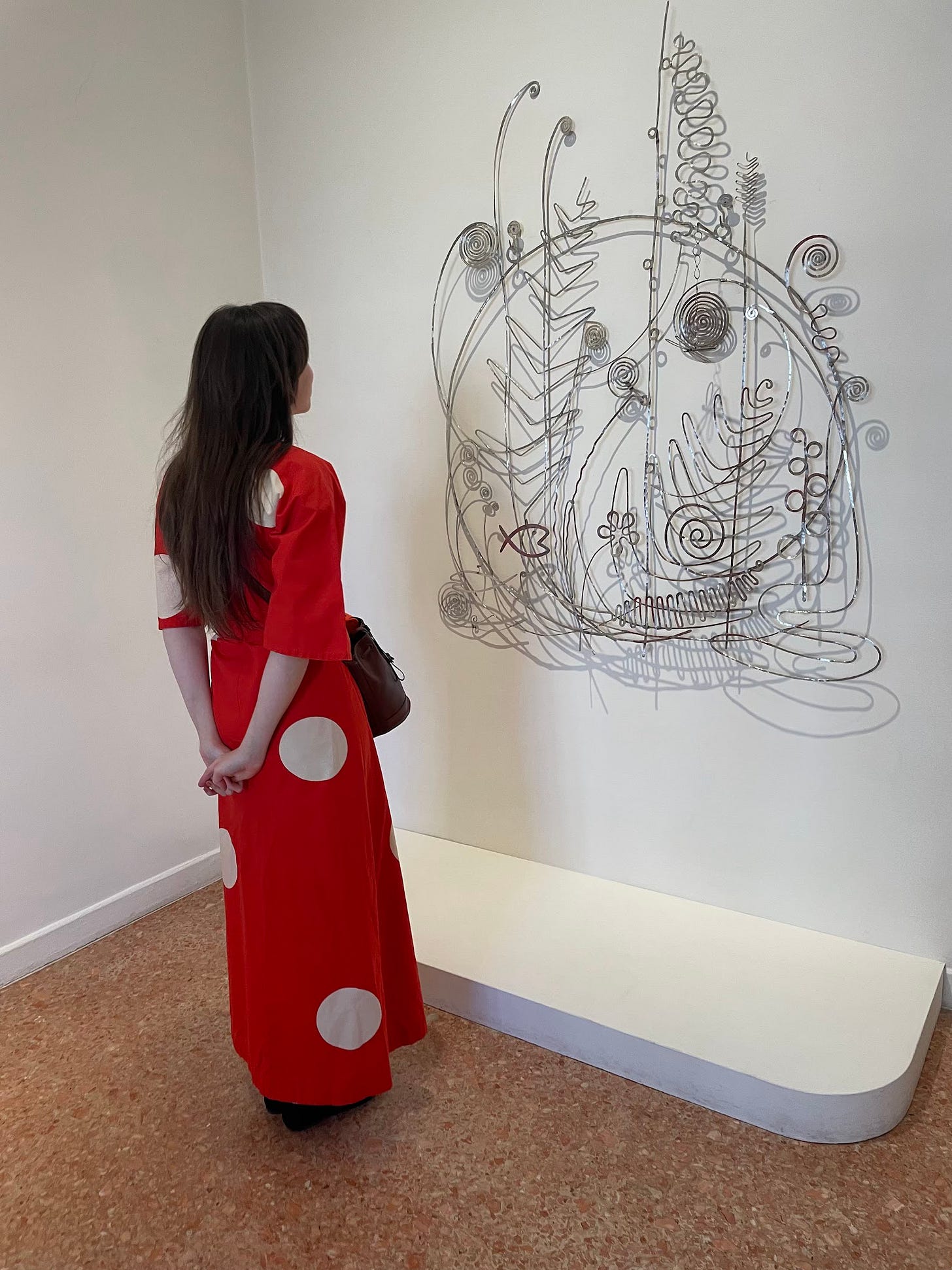
I like to do two little activities when documenting museum/gallery visits: 1) record how artists sign their work; and 2) take snapshots of close-up details that inspire me. Seeing artist signatures feels so impactful to me, as I spend so much of my time absorbing the details of these peoples’ lives. It makes them feel more human and less like fictional characters. I am closer to them through this exercise.


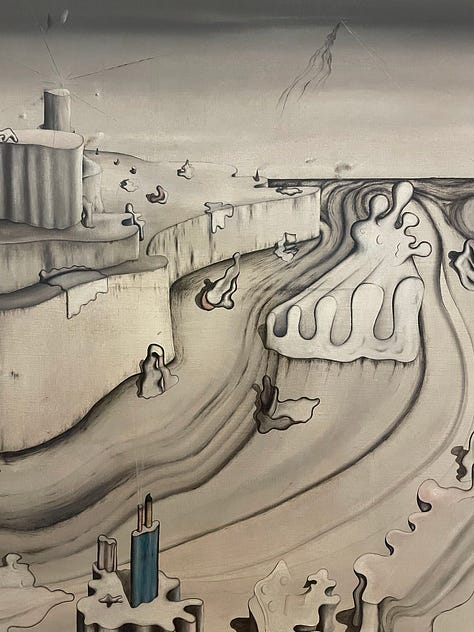
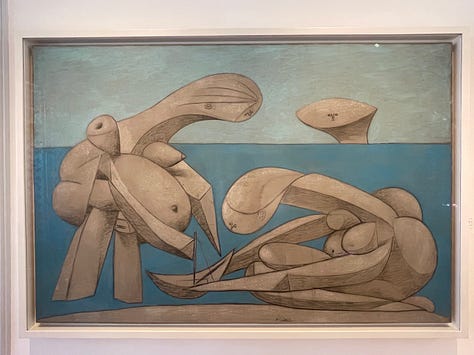
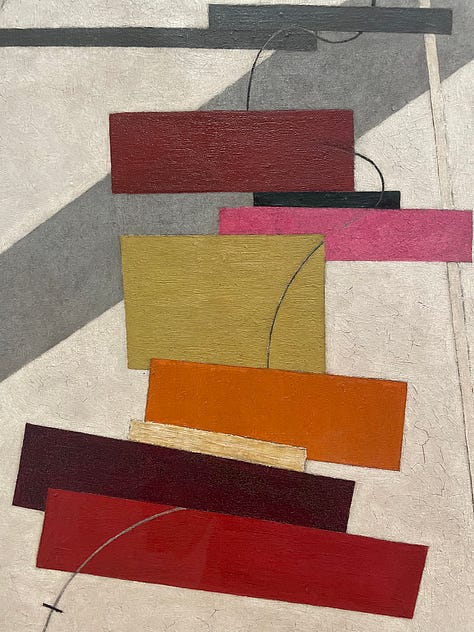
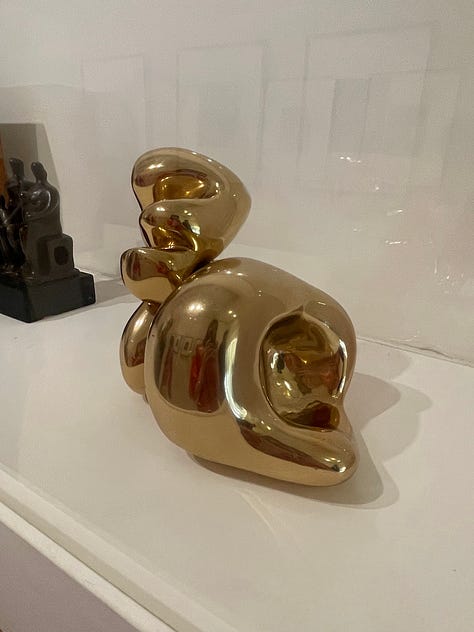
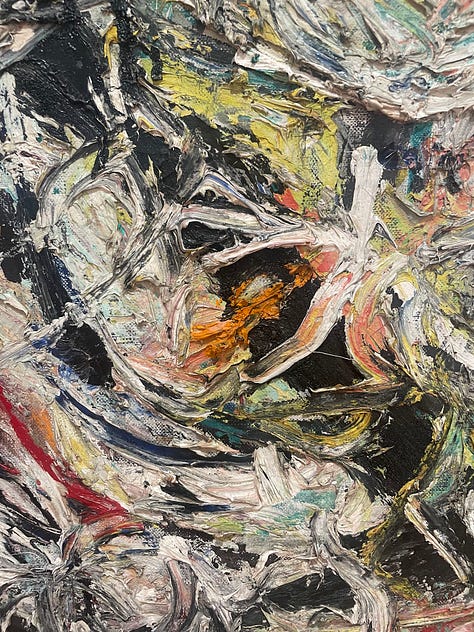
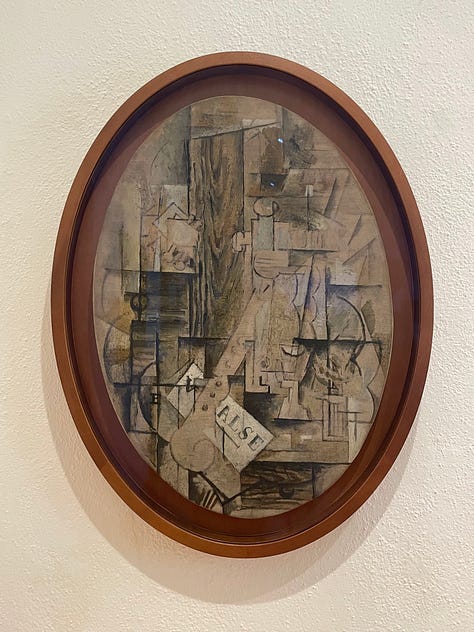
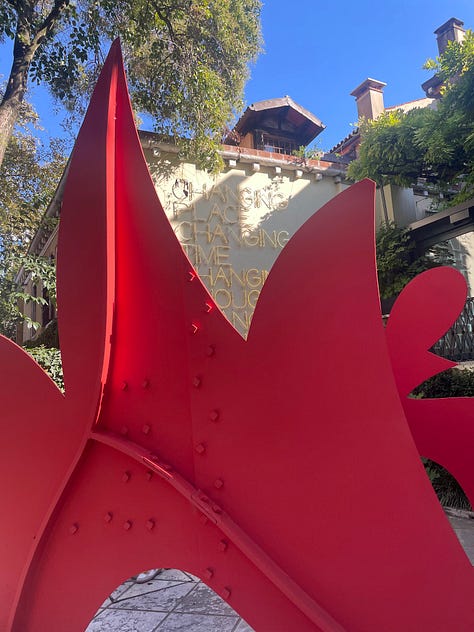
Another habit I have stems from my brief time as an art museum security guard while in college. I loooove watching the way people choose to interact with art. Sometimes, this dance is more fascinating than the collection itself.
Peggy purchased a 1948 sculpture, The Angel of the Citadel, from artist Marino Marini unseen. It was the last piece of Marini work in an exhibition to be sold, and when it arrived at her palazzo, she quickly understood why. I found this story from her autobiography completely hilarious:
It was a statue of a horse and rider, the latter with his arms spread way out in ecstasy, and to emphasize this, Marini had added a phallus in full erection. But when he had it cost in bronze for me he had the phallus made separately, so that it could be screwed in and out at leisure. Marini placed the sculpture in my courtyard on the Grand Canal, opposite the Prefecture, and named it The Angel of the Citadel. Herbert Read said the statue was a challenge to the prefecture. The best view of it was to be seen in profile from my sitting room window. Often, peeking through it, I watched the visitors’ reaction to the statue.
When the nuns came to be blessed by the Patriarch, who on special holy days, went by my house on a motorboat, I detached the phallus of the horseman and hid it in a drawer. I also did this on certain days when I had to receive stuffy visitors, but occasionally I forgot, and when confronted with this phallus, found myself in great embarrassment. Th only thing to do in such cases was to ignore it.
In Venice a legend spread that I had several phalluses of different sizes, like spare parts, which I used on different occasions.
Peggy Guggenheim, Out of this Century: Confessions of an Art Addict
And it seems that the sculpture remains a massive distraction to visitors. I stood behind a window in a gallery watching people for a bit—each reaction the same! I think this must have been the same vantage point Peggy watched her visitors and The Angel from.
My biggest regret while visiting Peggy’s home is not realizing that she was buried on-site. We walked past her grave without noticing and I might not be able to forgive myself for it! Rest in art peace, Peggy, you undeniable force.
Rowing with Gabriella
Upon hearing that we were headed to Venice for our honeymoon, almost everyone we knew joked that we needed to have a romantic gondola ride. They were expensive, and in my opinion, way too kitschy. We opted out, sorry!! I learned about Row Venice and surprised Jb with a boating lesson.
Row Venice is a non-profit organization of passionate women and expert vogatrici, Venetian by birth and by choice. We are dedicated to the preservation of the traditional Venetian cultura acquea and at its center, the voga alla veneta, the Venetian style of rowing: standing up, facing forward, native to Venice and made iconic by the gondoliers. Many of us are also athletes and regatanti, racing all season long and devoted to this Venetian sport that’s as old as the city itself.
I loved the educational and preservation aspects of Row Venice’s mission and was pretty excited about the opportunity. Apparently there are only 6 or 7 proper batele left in Venice and it’s the organization’s goal to continue educating people on the proper ways to row and care for the boats. This wasn’t a touristy-feeling activity, but instead a moment to spend two hours with a Venetian who knew her craft and vehicle intimately. Gabriella, our guide, was so lovely and gave us an experience we will never forget. We rowed through some quiet channels, without any tourists in sight, and into the laguna with the larger boats (including the airport ferries). It was definitely a workout, but also incredibly therapeutic. Place your right foot forward; advance your body through the bending of the knee; twist and pull the paddle toward you, making sure that the flatness of its tip is used to guide and push effectively; and pull your oar inward when passing other boats. Most of the lesson was in French, which made me pause sometimes to realize how absolutely insane it is that: I’m rowing a boat in Italy with my French husband and our charming guide is instructing us in surprisingly perfect French and I’m understanding everything and somehow not crashing or falling into the water! What a trip! And also a hazard if you ran into other boats (aka: people’s cars)! This was my top highlight of the trip. We had a blast and wish that we could have spent more time listening to Gabriella’s stories.
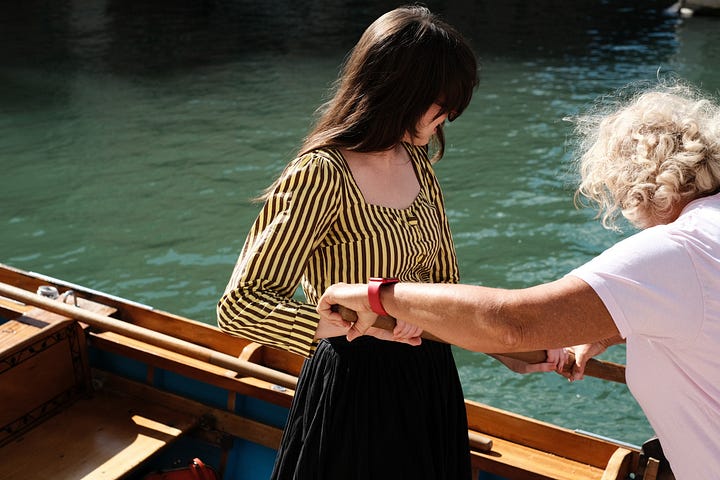
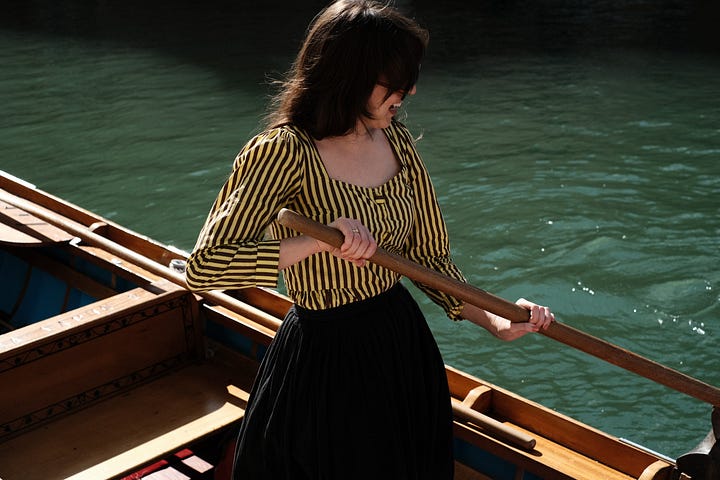
Gabriella taught us how to row, yes, but she also taught us: the three levels of the spritz, where to find a big and beautiful serving of tiramisu in Venice, that love-at-first sight at 19 exists (it’s how she met her husband 40-something years ago), that Venetians cross an average of 20 bridges per day (that’s twenty extra kisses for Jb and me) and how to keep ourselves balanced in many ways.
The cinematic, cursed cemetery island
There is a massive lack of green space in Venice. We saw some children playing soccer aggressively in a square and while talking to a waiter, we asked if there were any parks on the islands. He said no—you have to leave Venice to find grass. I was in awe about how this was possible, and imagined myself feeling suffocated if I had to be there longterm. Being on the water must surely replace that need for other forms of nature!
Then, we visited Isola di San Michele, an island which holds Venice’s cemetery. Now, THIS is where all of the greenery exists! Fertilized by hundreds of years of Italians…
Visiting a cemetery has been an activity that I’ve accidentally found so much comfort in doing while in countries foreign to me. I love to notice generational name patterns, to better understand layers of tradition and history. In Scotland, my eyes met the names of Agnes, Hugh, Duncan, Margaret. In France, it’s Marie, Jean-something, Jacques, and Pierre. For Italy, the ones that stuck with me most were the Marco, Angelo (my grandfather’s name), Elena, and surprisingly: Ines. I thought this was a name I’d only see repeatedly in France!
A productive day of us sunburning and boating with Gabriella turned very quickly into a torrential thunderstorm with thousands of tombs around us. We were totally trapped in the magical cemetery and took cover in a big mosoleum’s awning with two women from Romania. They tied silk scarves over their heads and under their chins, while huddled on carved wooden chairs next to us. We laughed and exchanged as many words as we could with our limited overlapping vocabulary. We waited for the sideways rain to pass—almost an hour—while sharing a couple of square meters with these cute strangers. The sky was rumbling and shouting at us. All of it was awesome. We began to see blue above us and ran for the boat terminal, finding ourselves on Venice again, in the sunlight.
Helmut Newton’s photography on *Biennale island*
What I love more than many things is unexpectedly filling weird gaps in knowledge—especially if it’s a connection between two niche subjects. I had heard and seen Helmut Newton’s name maybe one thousand times in my life, and had always associated it with fashion. Therefore, I assumed: Helmut Newton must have been a fashion designer of the past. We saw an eye-catching, baby pink exhibition poster popping up everywhere as soon as we stepped our feet onto land. Jb knew his work in fine detail and started to talk about his brilliance.
That’s when I realized that Newton was a photographer. He never made clothes, but he photographed them prolifically. Ohhhh, duh!! Everything made sense pretty quickly. There were countless opportunities for me in the past to chase my teeny bits of curiosity of who/what the heck Helmut Newton was just a tiny bit further and surely it would have made me fall for his work instantly. Instead, I did the falling in Venice.
We took a boat to San Giorgio Maggiore, just a hop across the water from the chaotic side of San Marco. Most of the buildings on the accessible side of the island are currently dedicated to hosting the Venice Biennale (aka private access only), but the Cafe Giorgio and Le Stanze della Fotografia are open freely. We were happy and felt lucky to have a big slice of Helmut Newton practically to ourselves for the afternoon, as most people were busy with other exhibitions. Our minds got to feel lustful inside the oversized wall panels that held portals of Helmut’s fashion-adorned worlds.
The Fishermen of Burano
We spent the last two nights on the island of Burano, approximately 45 minutes from Venice by boat. I had read a heart-warming article about Burano, written by Ruth Reichl in 1984, and immediately added it to our itinerary. I thought it would be nicely romantic to wind down our trip by spending it on a sleepy fisherman island. That was party true, but it also felt a little isolating. And Burano wasn’t so calm! During business hours, tourists flocked there by the literal boatloads. The island itself is small and magically filled with brightly-colored homes, but it left us craving our previous neighborhood and the general pace of the Venice we had just said goodbye to. Plus, there was no Marchini Time.
Our Airbnb, however, was a charming little cottage filled with stories of a woman named Pilar. Each object in the home had a tag attached, poetically educating us of the sentimental value of everything we looked and touched. The place served as a literary writing project for some natives of Burano, hoping to preserve the stories of the island. I found it adorable and I’ve never experienced an Airbnb or hotel like it.
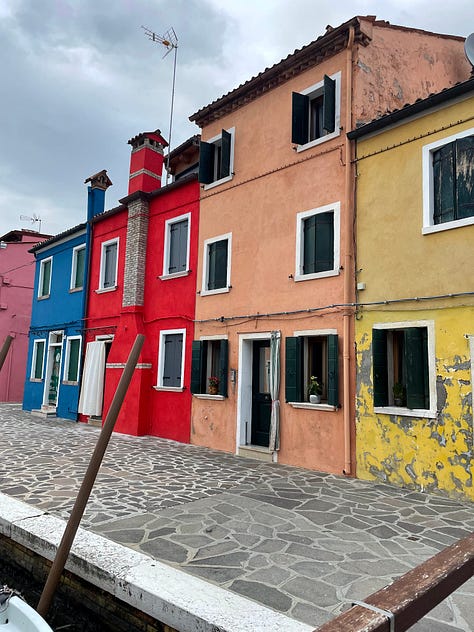
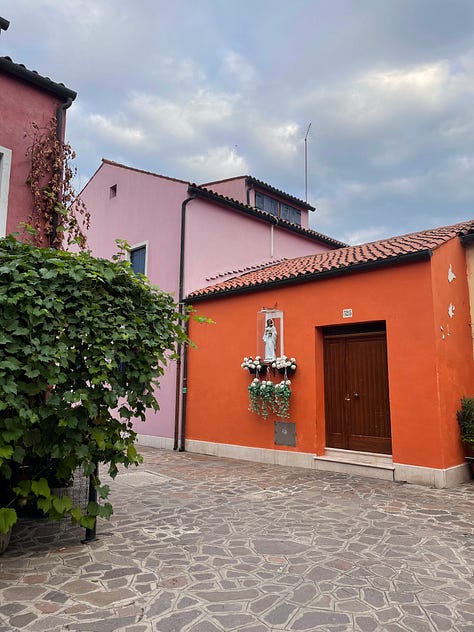
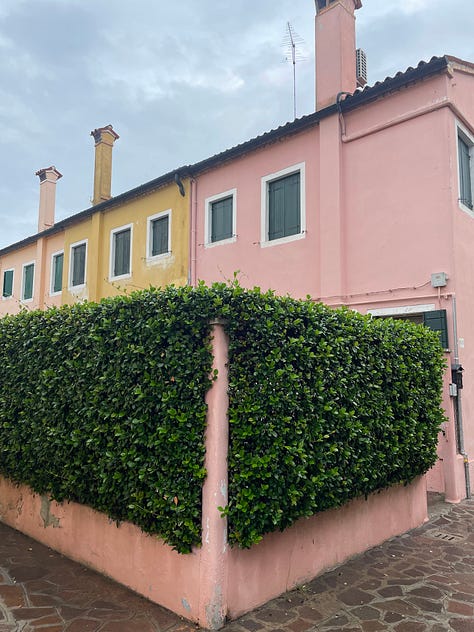
During one night on Burano, we ate dinner at Trattoria al Gatto Nero (The Black Cat) and spontaneously ordered their five-course menu. We were on a high with treating ourselves! It was our honeymoon!!! We were one of five tables. We might have made the restaurant wonder if we were sneaky Michelin inspectors, or not. I think they liked speaking to us in French regardless—and maybe our honeymoon story seemed fake.
When we left, we practically rolled out of the doors because of how stuffed we were. Instantly, a black cat crossed our paths outside of the restaurant! What are the odds?
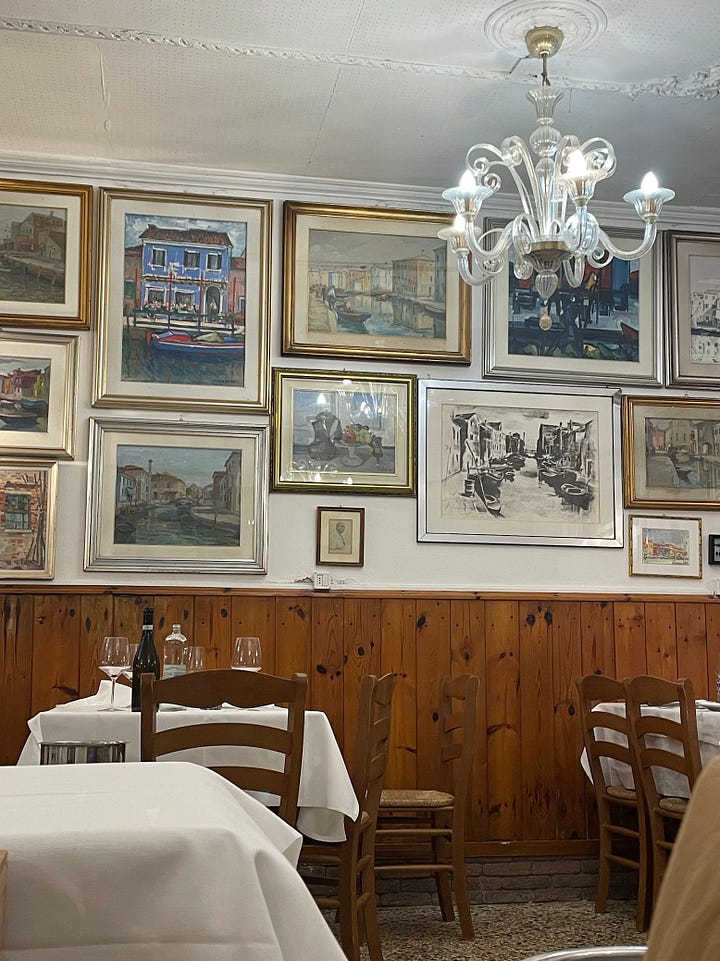
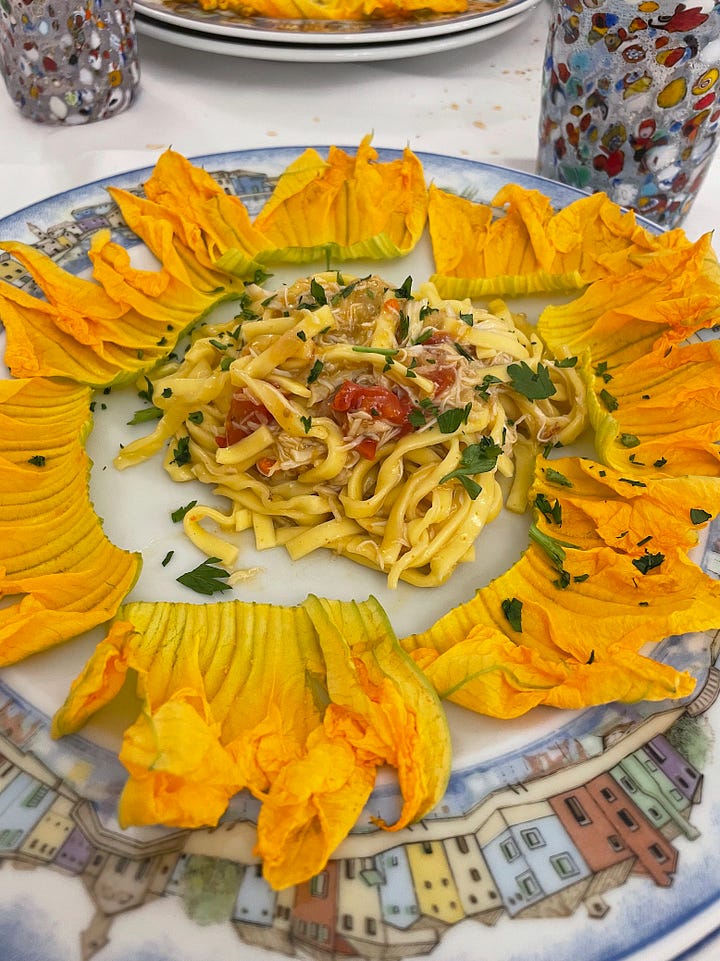
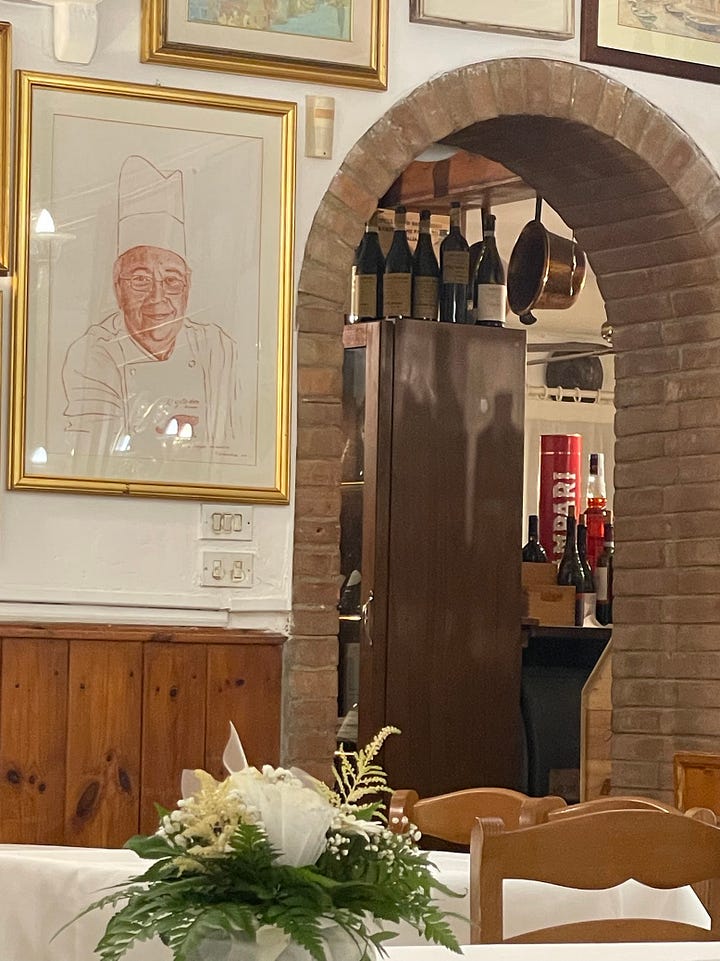

“Is Venice overrated?”
A stranger innocently asked me this in an Instagram comment. In my eyes: zero percent overrated! My best answer is that you see what you wish to see. We rushed by the areas that were overwhelming, putting our blinders on the crowds and only choosing to look up at the monuments. Then, we continued to the next street where we knew there wouldn’t be a soul!
For example: when passing through Palazzo San Marco, there were probably a couple of thousand people there, if I could guess. Maybe more. I didn’t realize the scale of the plaza itself before visiting. We needed to get through to make it onto a boat, and I thought it would be important to see because it was something my grandparents wrote about in a travel journal I inherited from them.
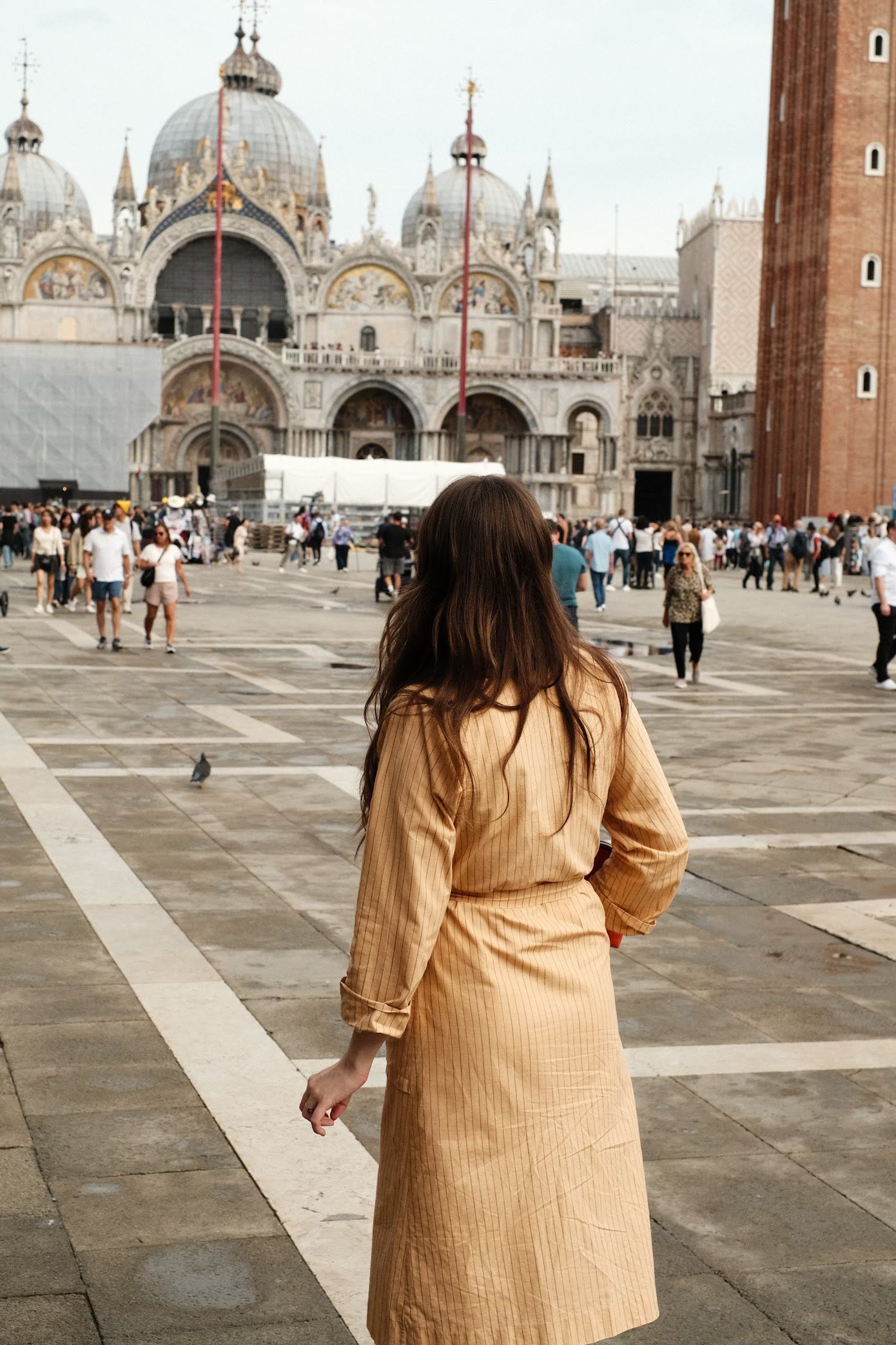
What we could have paid attention to: these 2,000 people and how utterly insane they were acting, many with selfie sticks.
Instead we were: getting as close as possible to the marble of the building, admiring the way some pigeons were bathing in a little side fountain, popping into a nearby shop to ask the employee how old their building was, and looking up to see how the buildings met the sky. It was all so BEAUTIFUL!
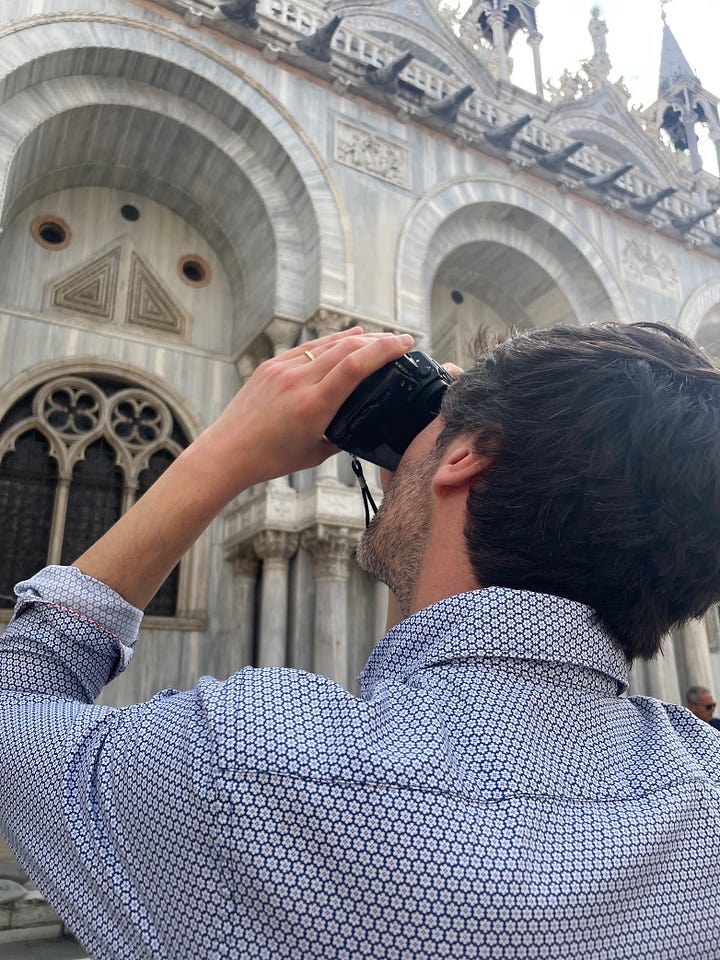
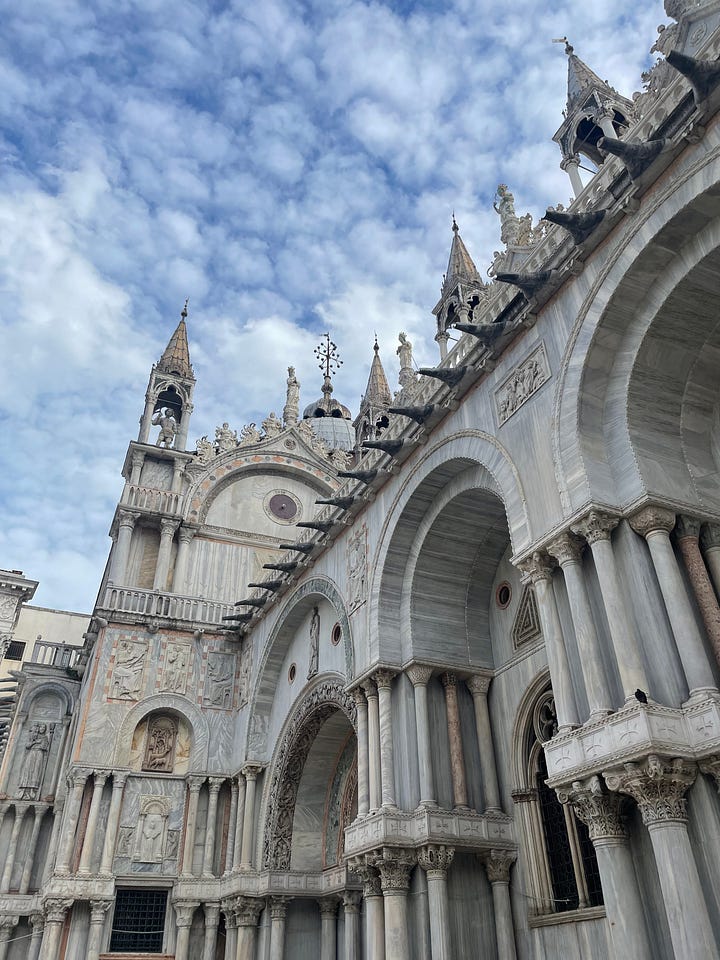
I think we were lucky to be in the city in the transition between summer tourist season and the slower months. There were a few areas that were absolutely awful in terms of the hoards of people who felt like they were trampling all over everything (Rialto Bridge!!!), but for the rest, we were met with peace and cleanliness everywhere. I was never worried about my safety either, which is something I worry about in every corner of the United States.
Breathing alongside architecture
One monumental idea that is cemented from my time in Venice: architecture very strongly and obviously dictates how locals live their days. This city was one of the best examples I’ve seen of humans taking the natural architecture of what they’ve been given and working so impressively well with it. Venice was built in a fascinating way (one of my closest friends, Molly, sent me this video just before the trip). From these constraints of nature, the city transpired. And today, the routines of Venetians and those who live on the other, smaller islands like Murano, Burano, Mazzorbo, etc., are dictated by what they are architecturally presented with.
Your walking routes can be interrupted by high tide spilling into certain streets during various hours. Your transportation to certain places is only possible via boat because of a lack of bridges or roadways—and the very obvious, overwhelming presence of water. Trash is picked up in small batches daily from little bags hung from your door, or from a few collection points. The sanitation workers come by boat and have to essentially wheel barrow it to and from your house. There are no scooters, motorcycles, skateboards, or even bicycles. Anywhere.
Citizens of Burano have colored and patterned curtains hanging in front of their textured-glass doors, to allow for privacy at night and during the summertime when doors needed to be propped open for air circulation. This was curiously fact checked when we asked a local! Little holes are spaced out between the stone streets to allow for drainage, and often, you’d need to broom excess water yourself into your closest drain. On Burano, people neatly hang their brooms outside their front door as their quick tool for water evacuation.
And the shutters! Much like in France, it is a choreographed dance every morning and night to allow for light, sound, and weather control. A symbiosis (or not) between your home’s interior and the environment outside.
I am fascinated by all of these big and small details. I grew up in several small houses around Phoenix, Arizona, and the only manipulation we did to adjust to the landscape was blast AC and not leave the house for 4-6 months a year. We felt trapped by our natural and manmade architecture, and the oppressive heat. It felt uninspiring and wilting. I would have much preferred my streets rising and draining water, and the little front door with striped curtain and contrasting broom set. These thoughts make me wonder how I’d be today if I was raised with water and grazie mille instead of cacti and thank you very much.
Other Notes:
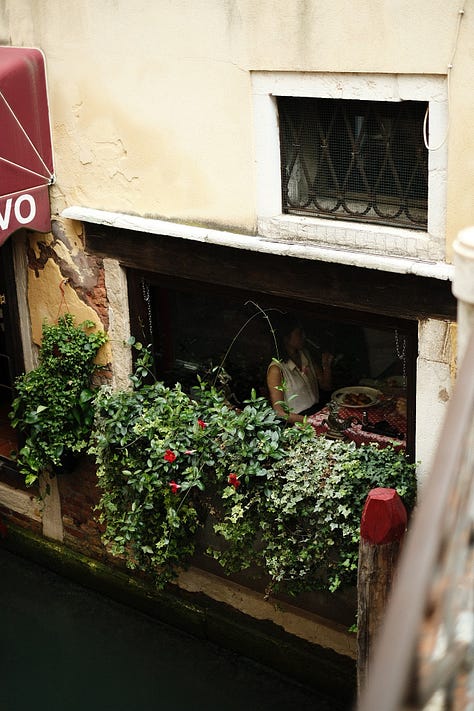
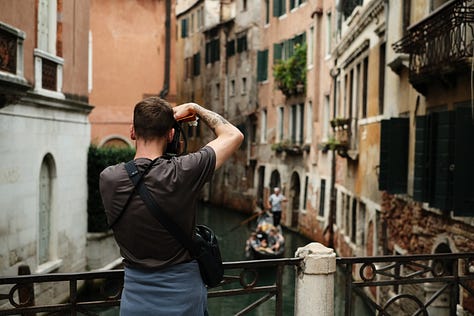
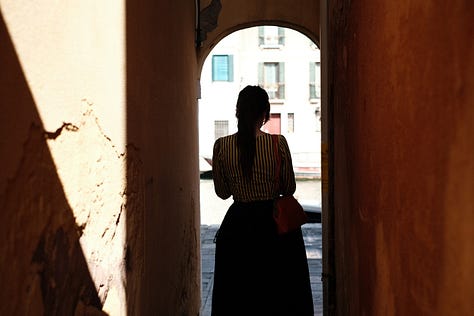
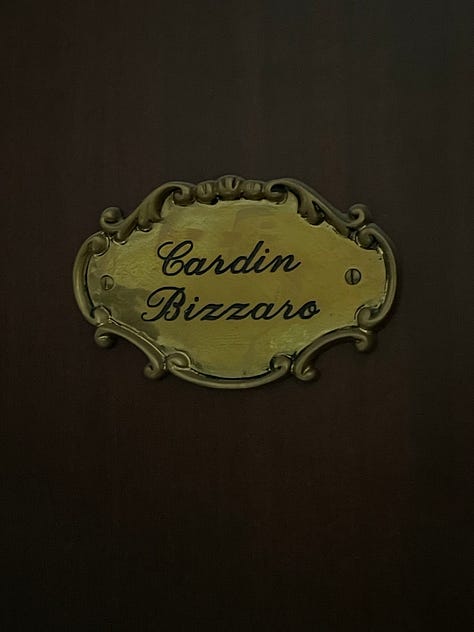
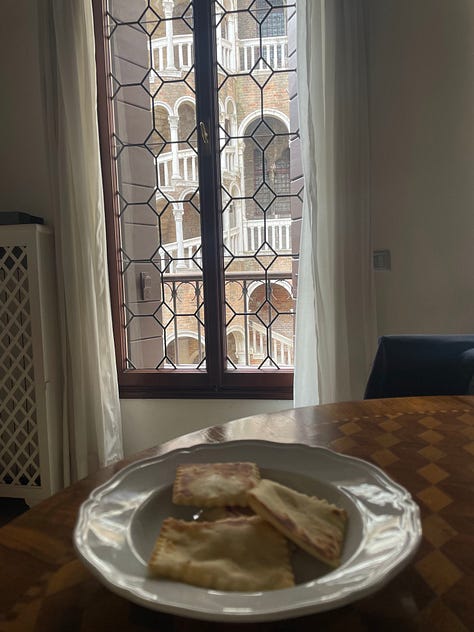
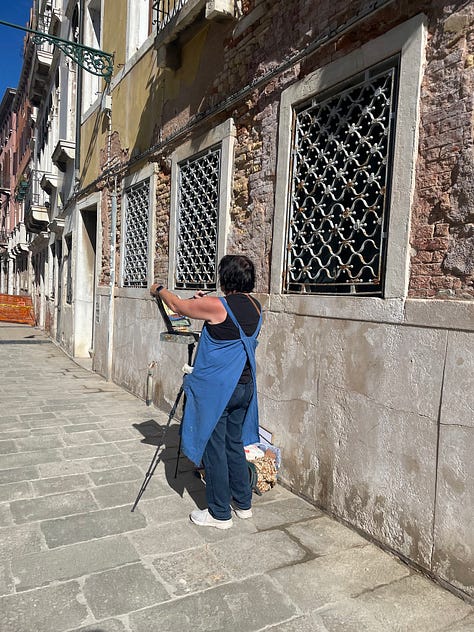
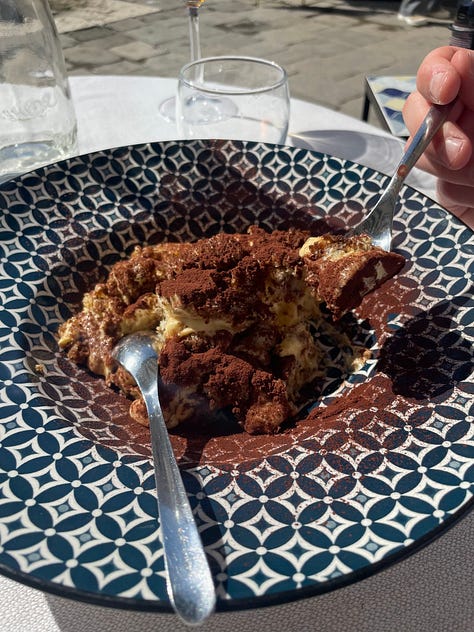
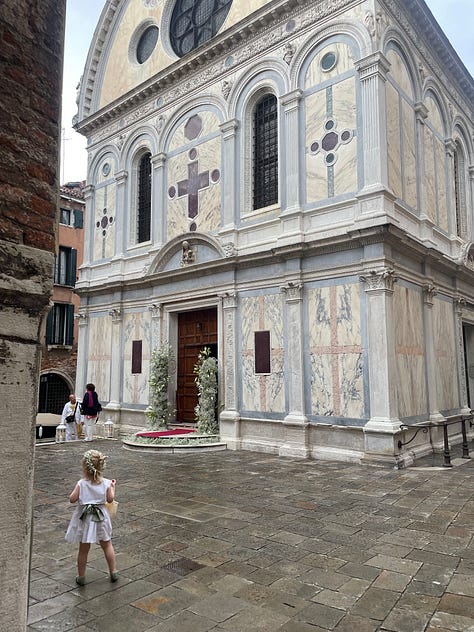
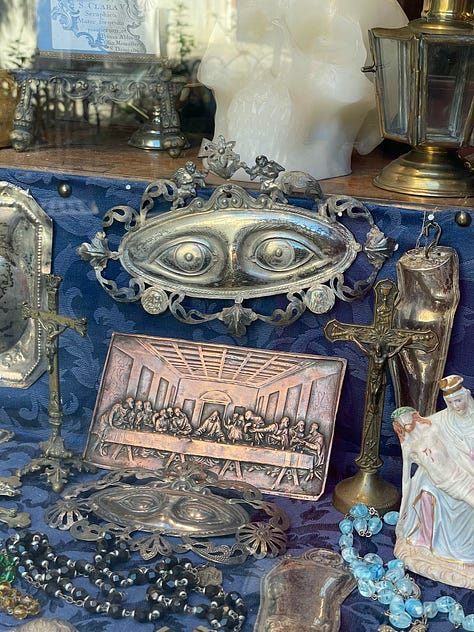
This writing is a fraction of the things we ate, saw, listened to, people we met, etc. Most importantly, we heard a man shout a very genuine “MAMMA MIA!” in the streets, so I can check that off of my life bucket list.
We tried learning as much Italian as possible while smiling with everyone. I think my mouth is stuck in the “grazie mille” motion and I love it. The phrase keeps wanting to sneak out of my lips. Here’s Timothée Chalamet on the sexiness of French (as a French speaker) versus Italian. I can now officially attest to his correctness. I felt Timothée’s “DAMN!” in my core.
I picked up a copy of The Militant Muse: Love, War and the Women of Surrealism by Whitney Chadwick from the Peggy Guggenheim shop. It perfectly is in my book niche—my favorite type of book is a non-fiction one centered around people, designs, and/or places of the modern era. I also really want to read Peggy by Rebecca Godfrey.
I often feel overdressed in the US and even in France. Italy was much more my speed! My colorful 1960/70s vintage dresses felt totally in place. I bought a little, vibrantly-organge film Yashica from a photo shop on the first day. It felt very fitting to be running around colorful Burano in addition to my orange vintage dress and purse (which I wouldn’t normally style together, but sometimes travel presents its fashion constraints).
Substack writings that I enjoyed this month, related to Italy: A Letter from Venice, which is one of the best writings I’ve come across on this platform and one that I was so thrilled to read WHILE I was in Venice. It helped me deeply see the city even more clearly. | 14 wonderful things I learned in 14 years in Italy | The Holiest Cannoli is Inside a Convent (The convent was her version of my Marchini Time, but honestly way more cinematic!!!)
Some New Yorker-published stories related to Italy that I have bookmarked in the past: The Old Man in the Piazza | The Rescued Portrait of My Italian Grandmother | Not related to Italy, but to Peggy’s uncle, the other Guggenheim: Choose Your Own Kandinsky Adventure at the Guggenheim
Jb is a fun-as-heck travel partner because he’s always up for eating, learning as many new words in other languages as possible, talking to everyone, sneaking around to take photographs of interesting things, making up funny rules/games with me, patiently listening to me ramble about art or architecture (and always adding to the discourse), and introducing me to so many wonderful things. I guess that’s a sign of picking the right person to marry. I’d call it a successful honeymoon! Signing off with this tribute to him, and to Venice’s most popular dog, the Dachshund (also my favorite).* ❥
*PS - This reminds me of a mystery that I can’t wrap my head around. There’s an Instagram account that follows me that’s named after Richard Neutra, the modern architect, and it’s only photos of Dachshunds with Italian captions. Since everything is connected in life, and I’m left wondering what this all means.
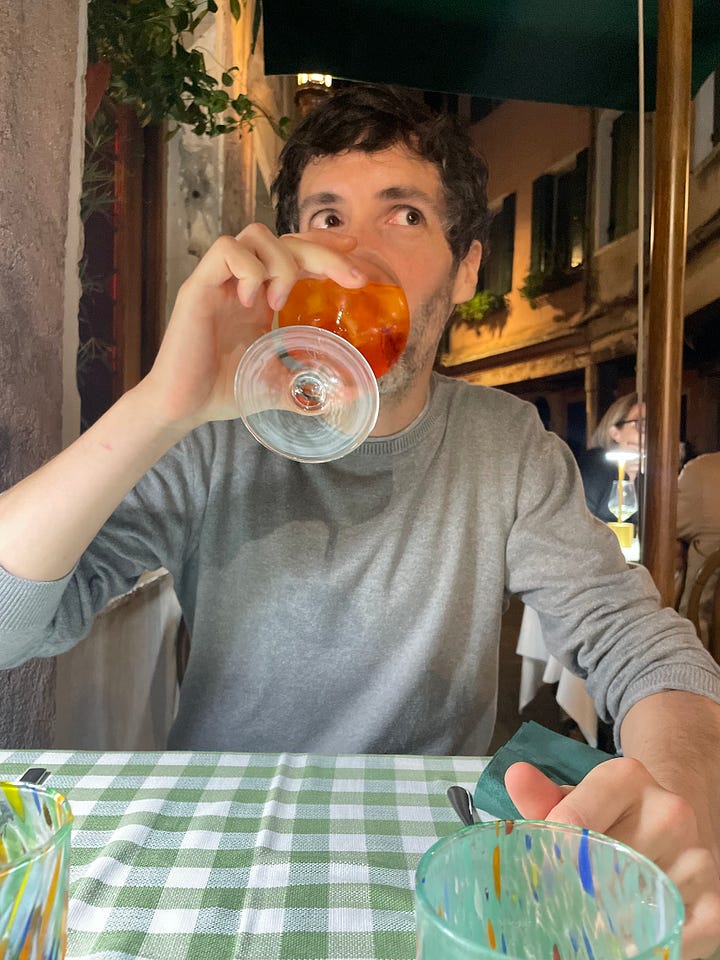
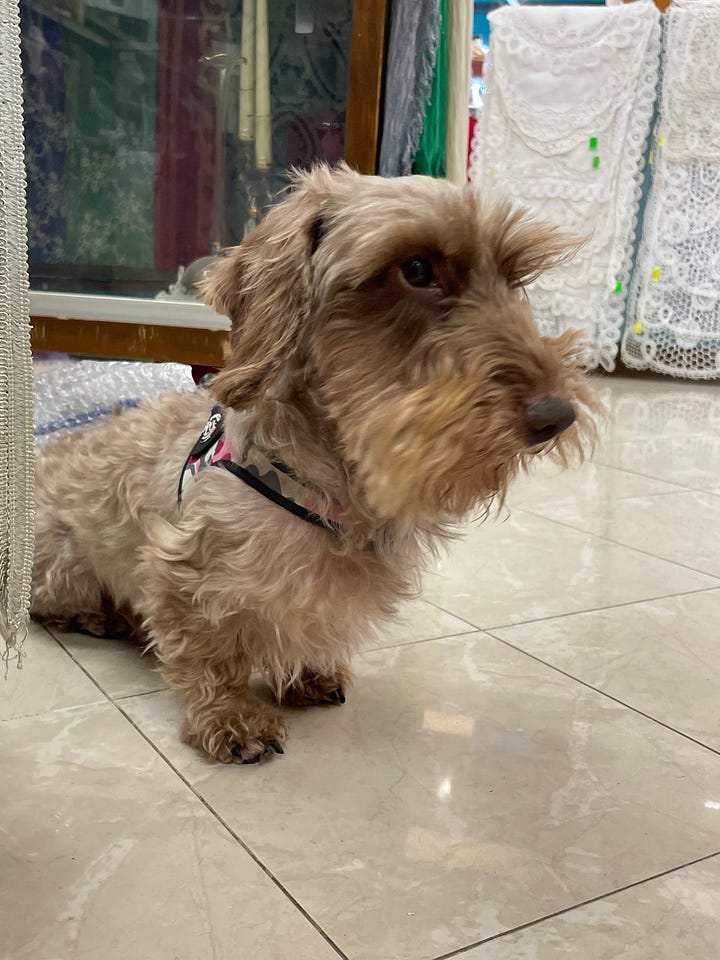
**
Ciao tutti, grazie mille !!!!!
Kelsey Rose





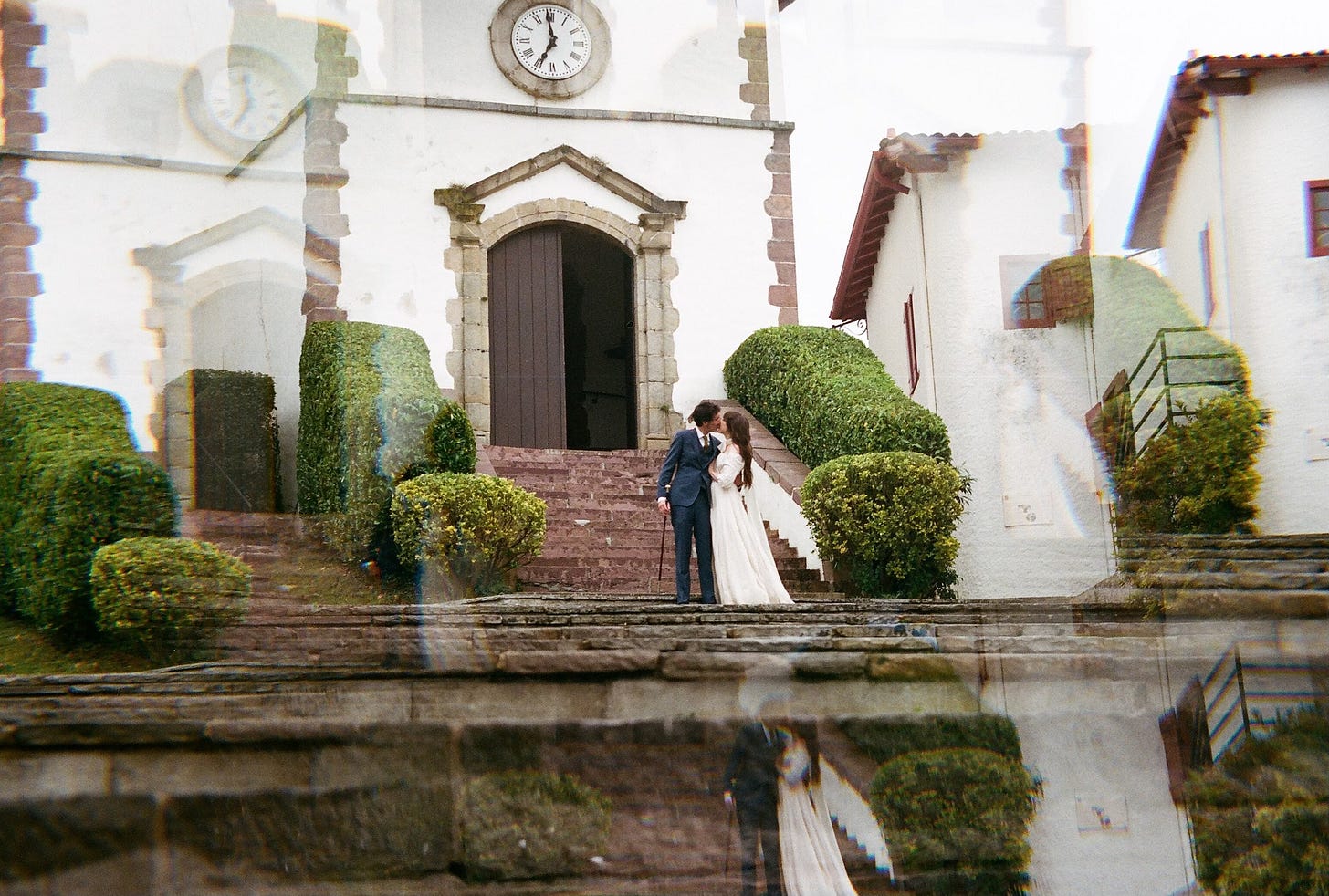
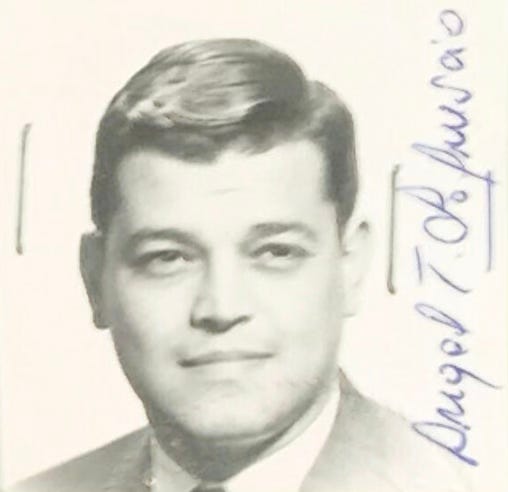
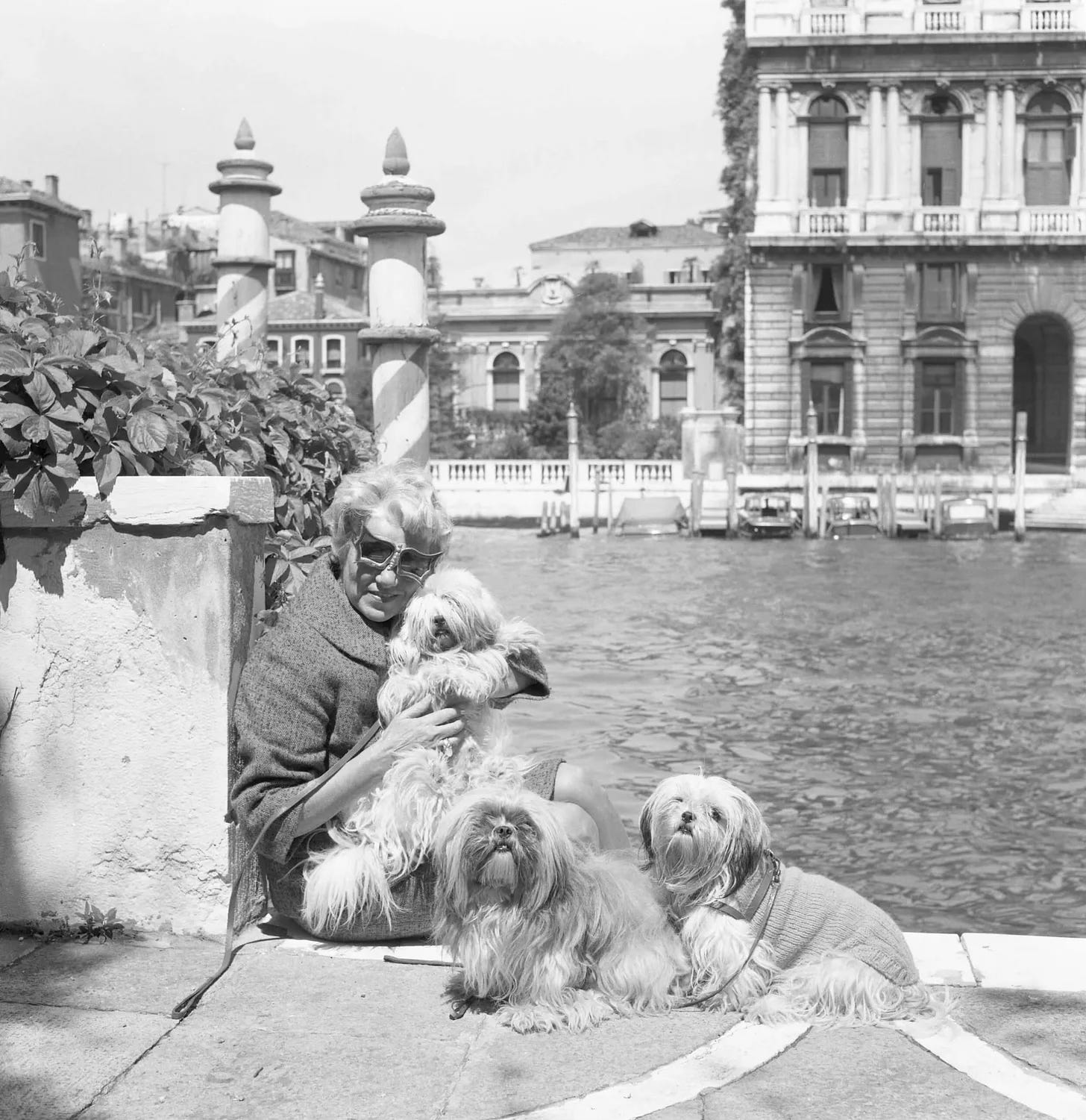

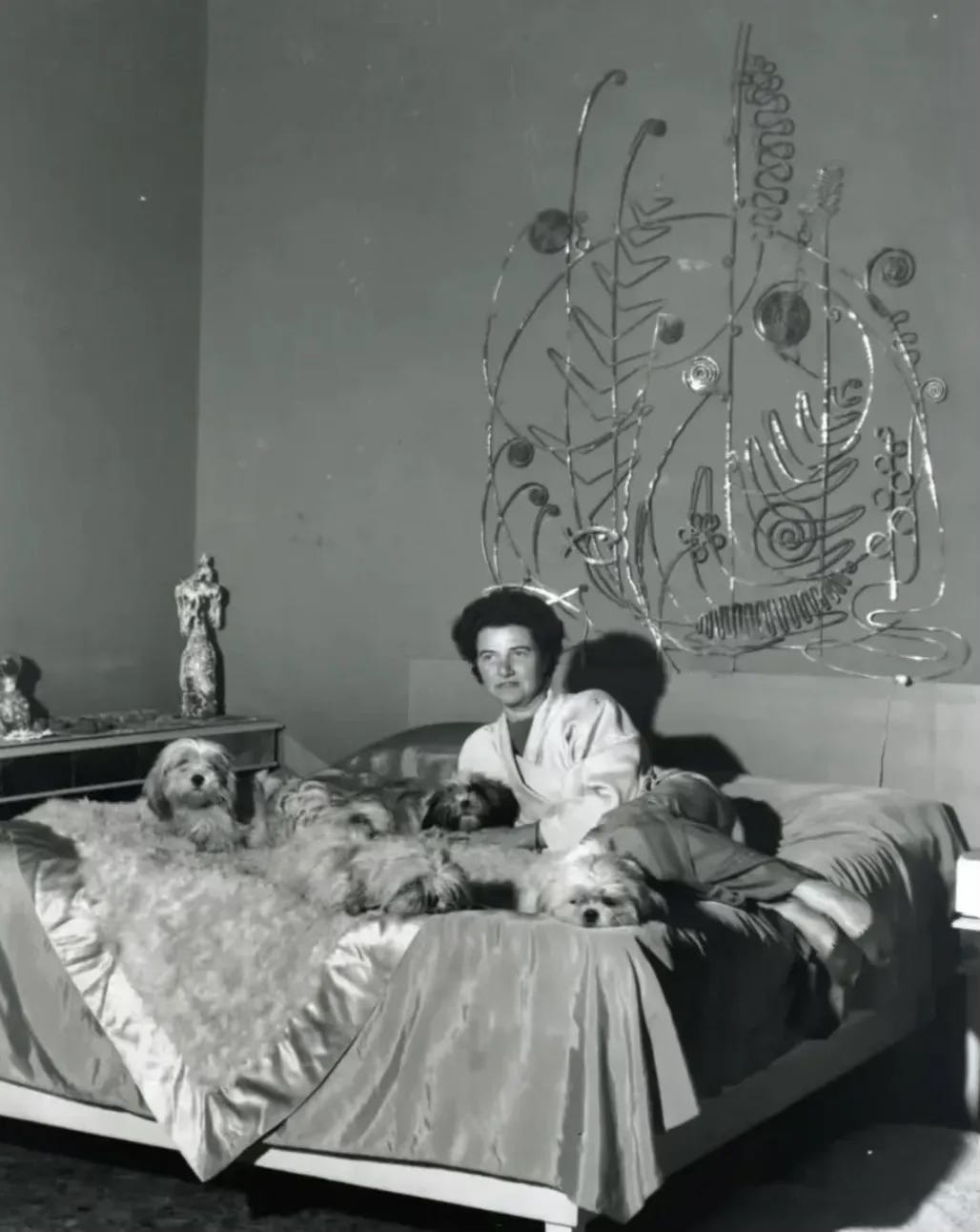
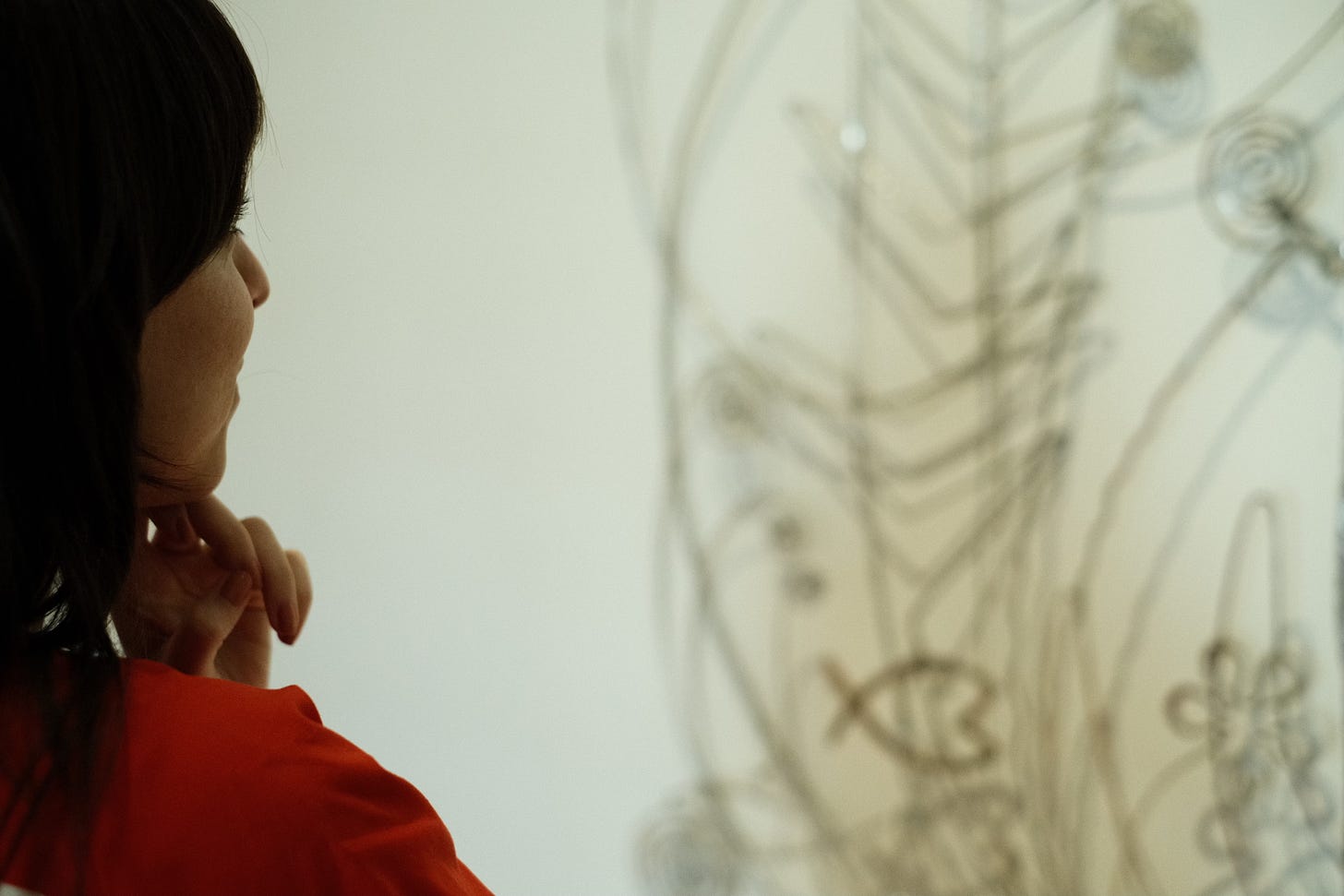
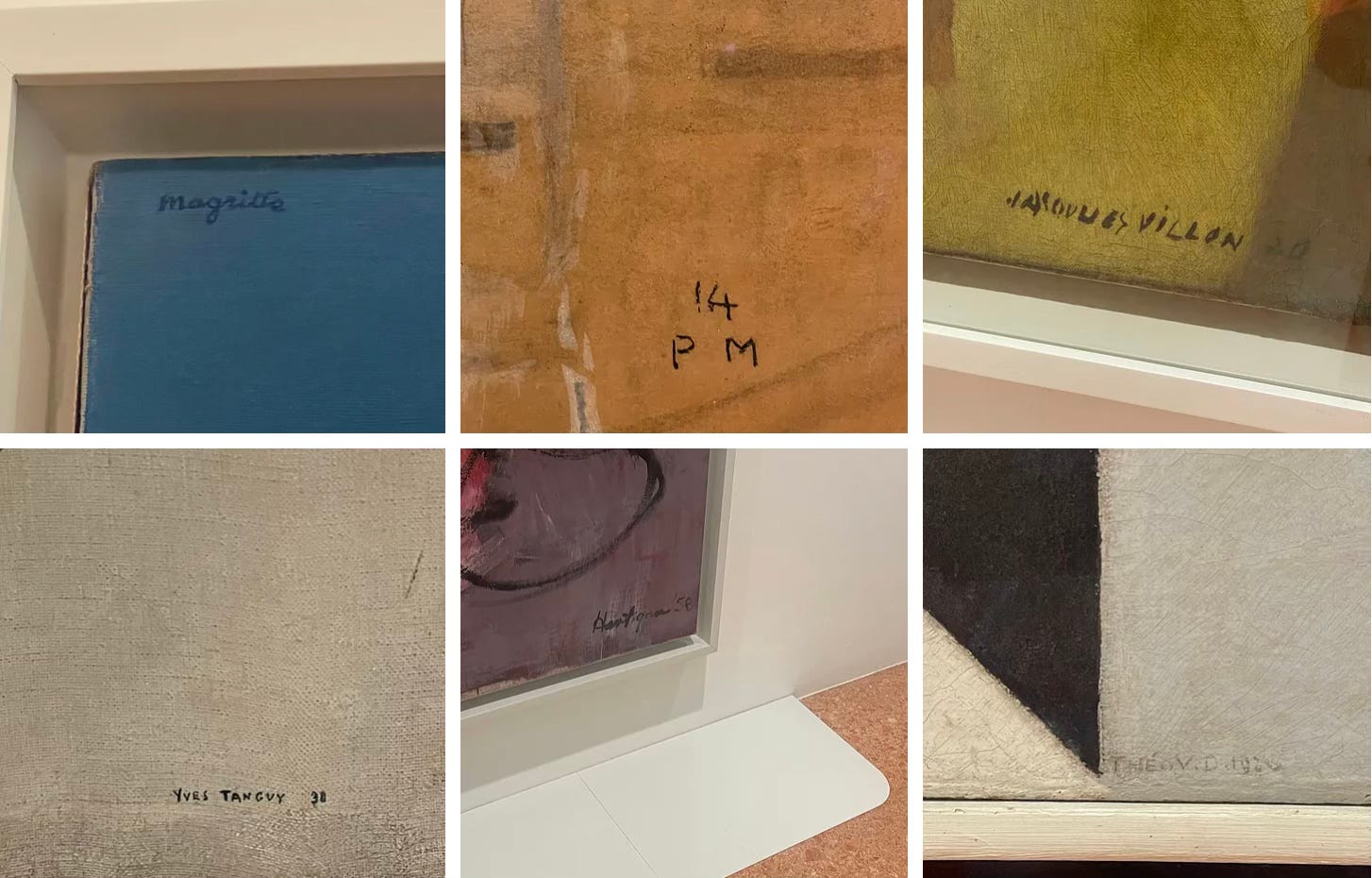
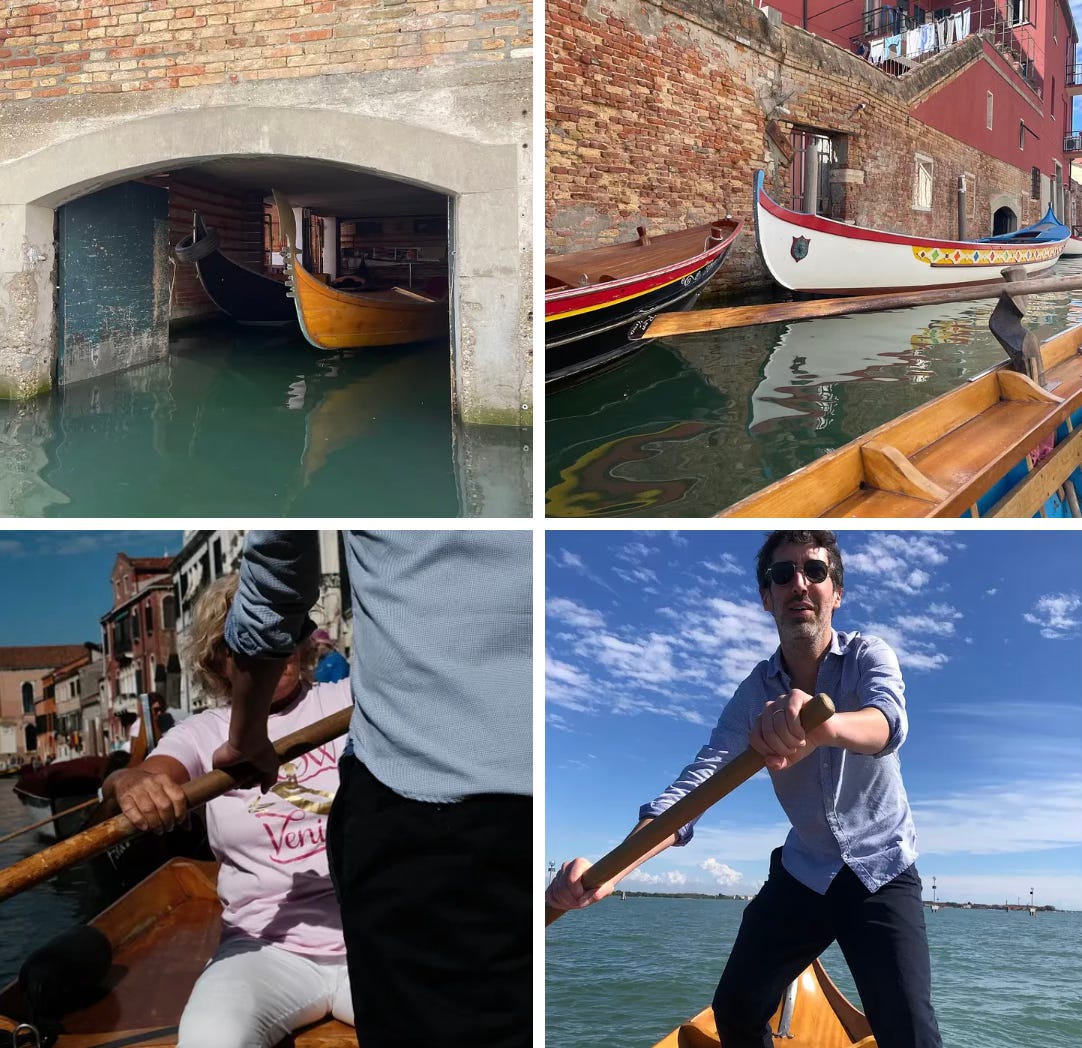
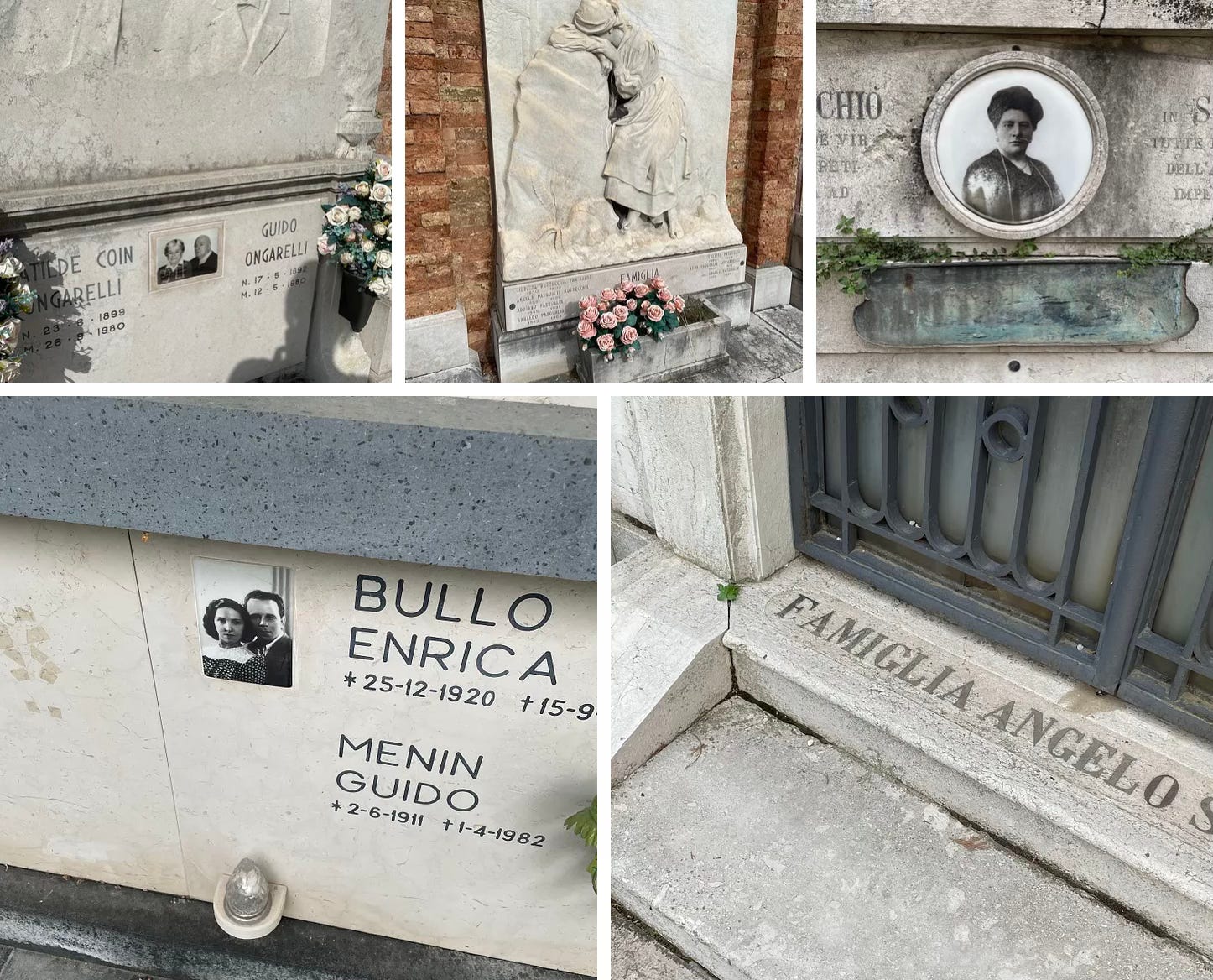
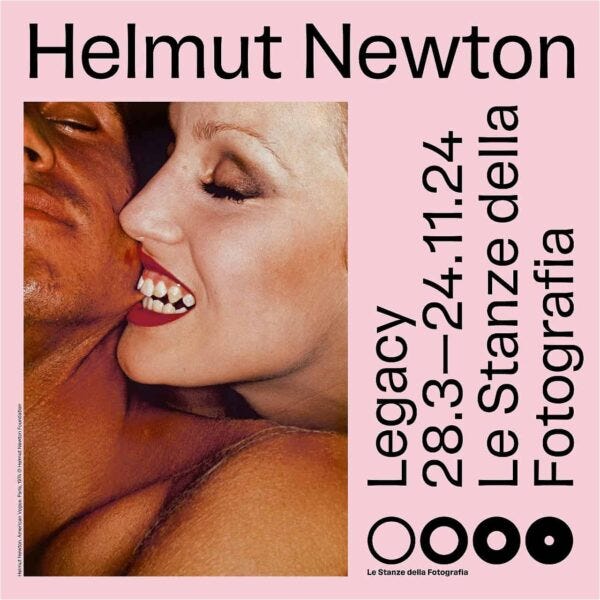
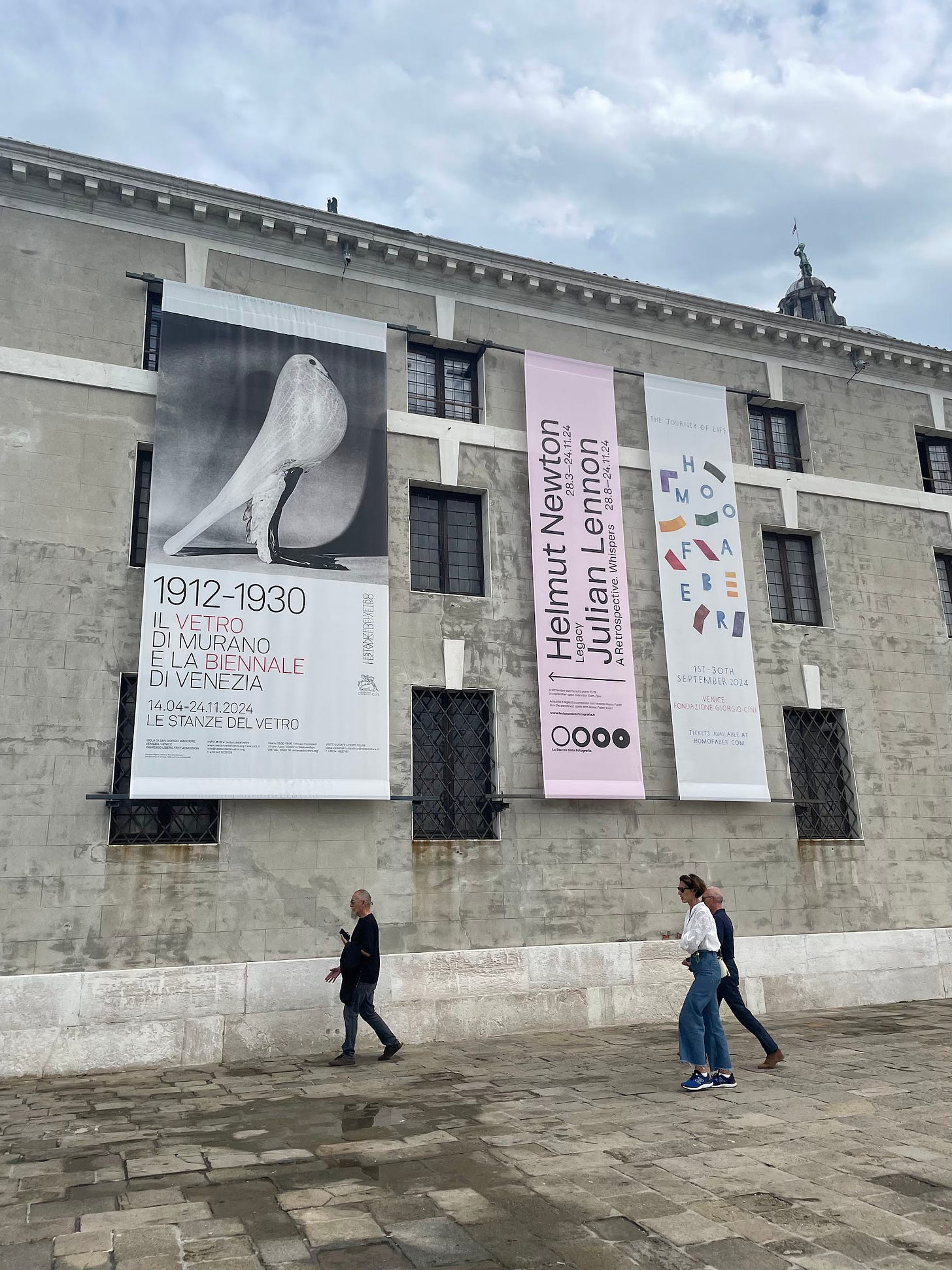

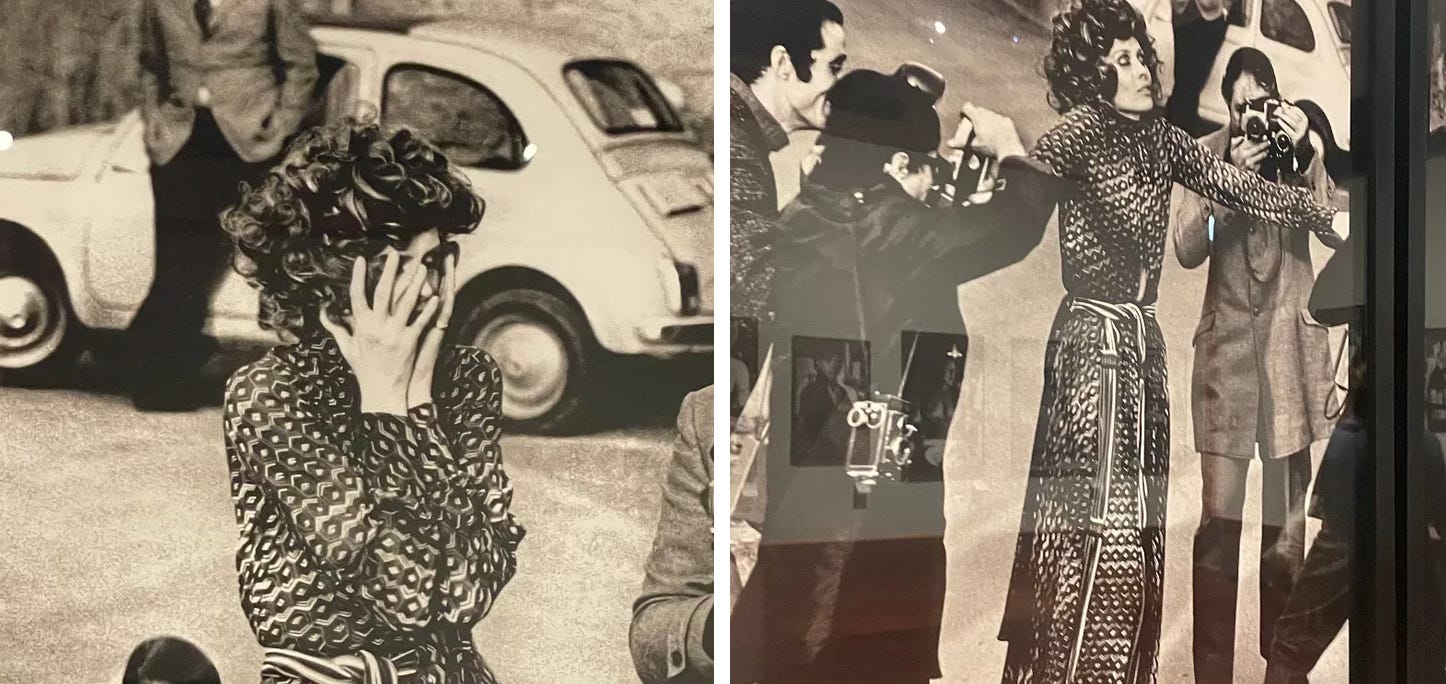

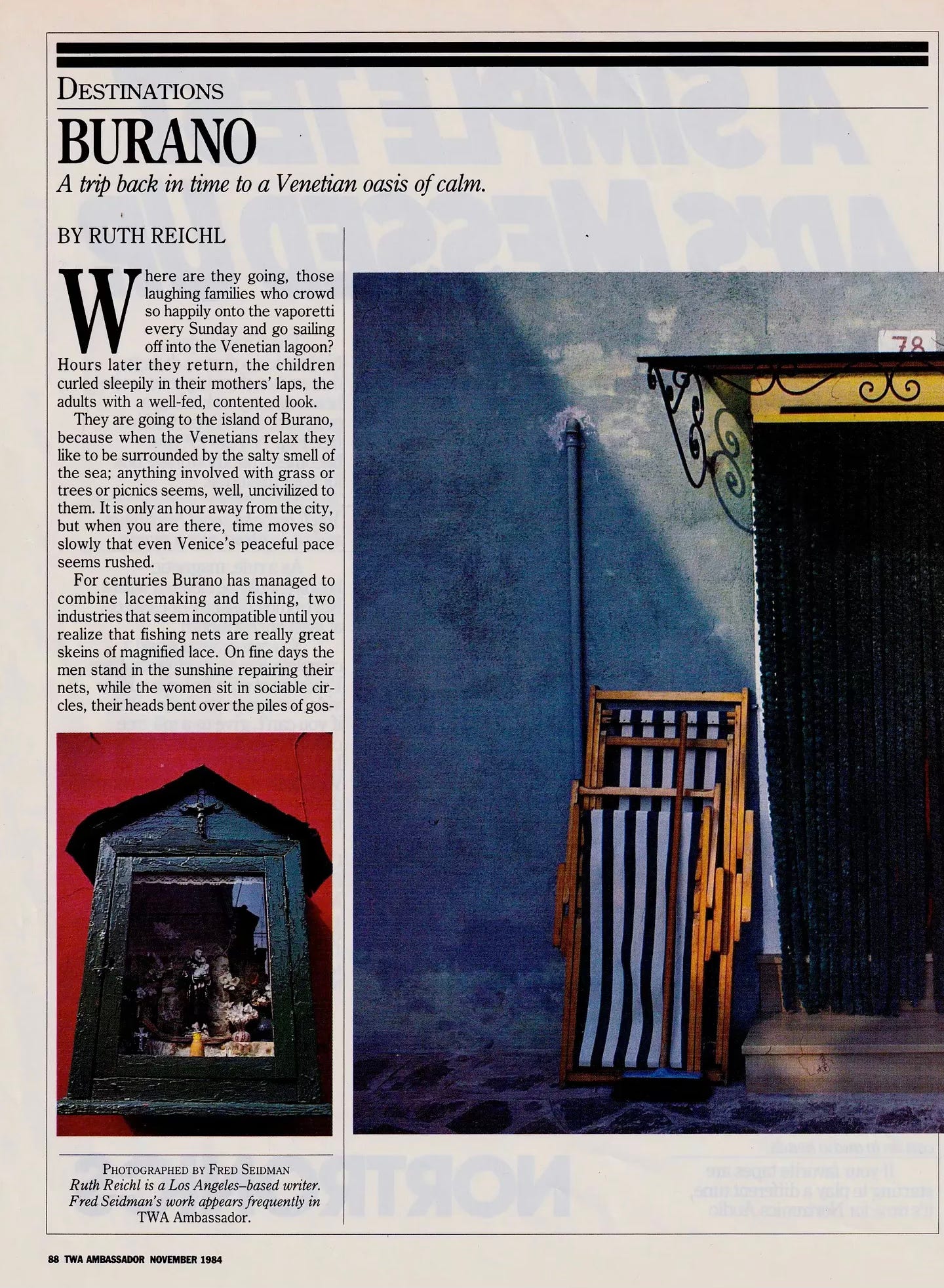
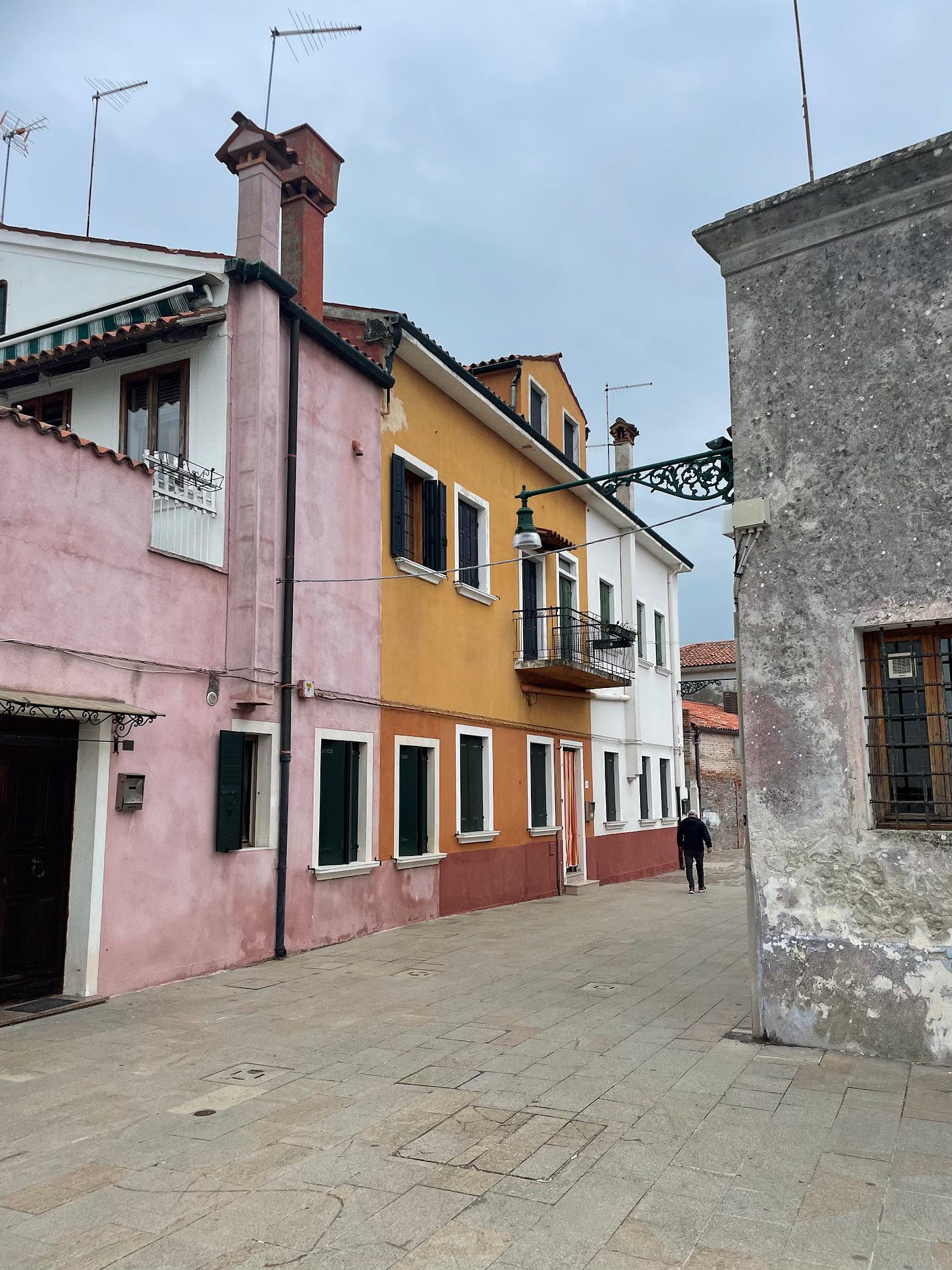

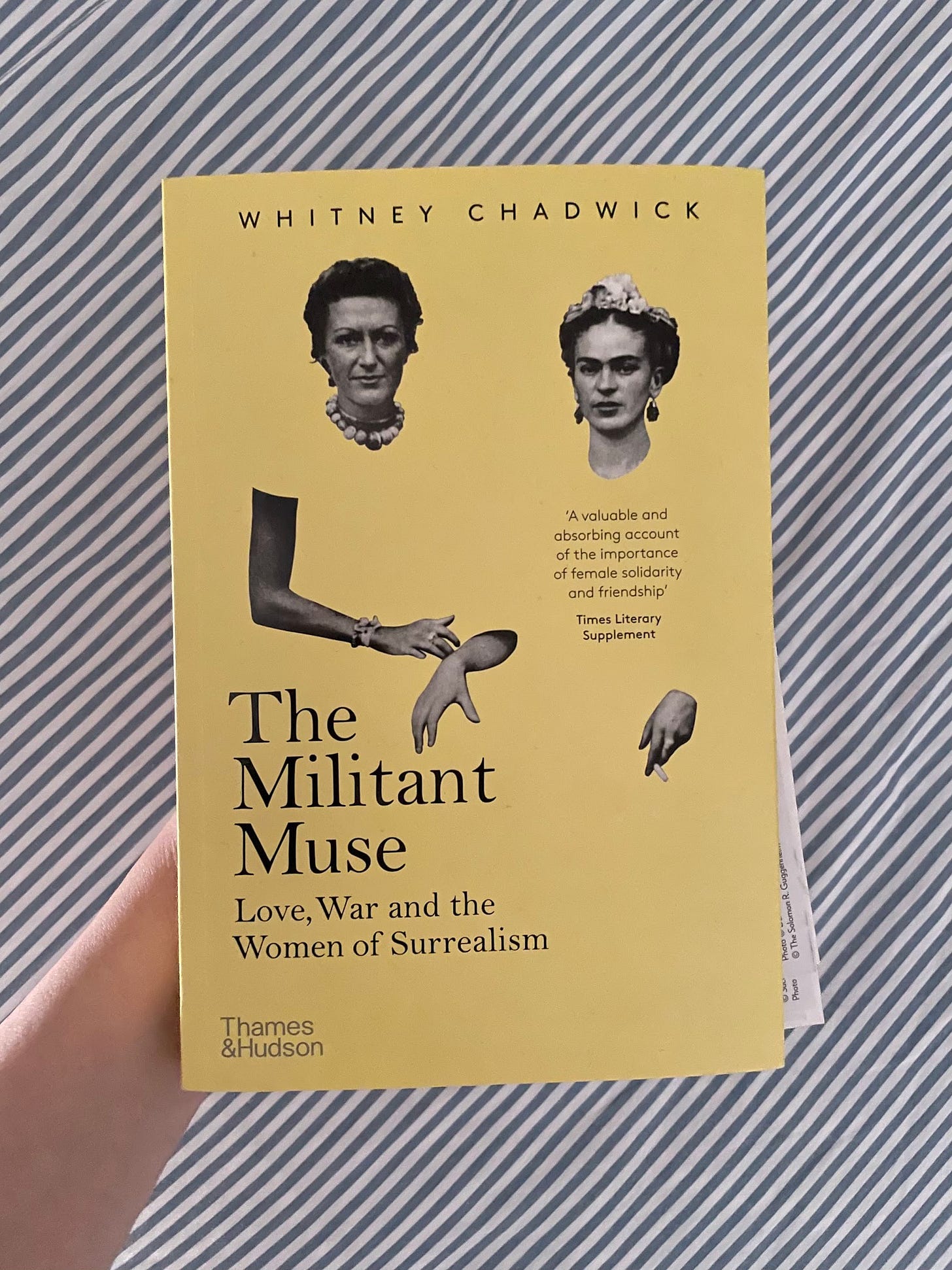
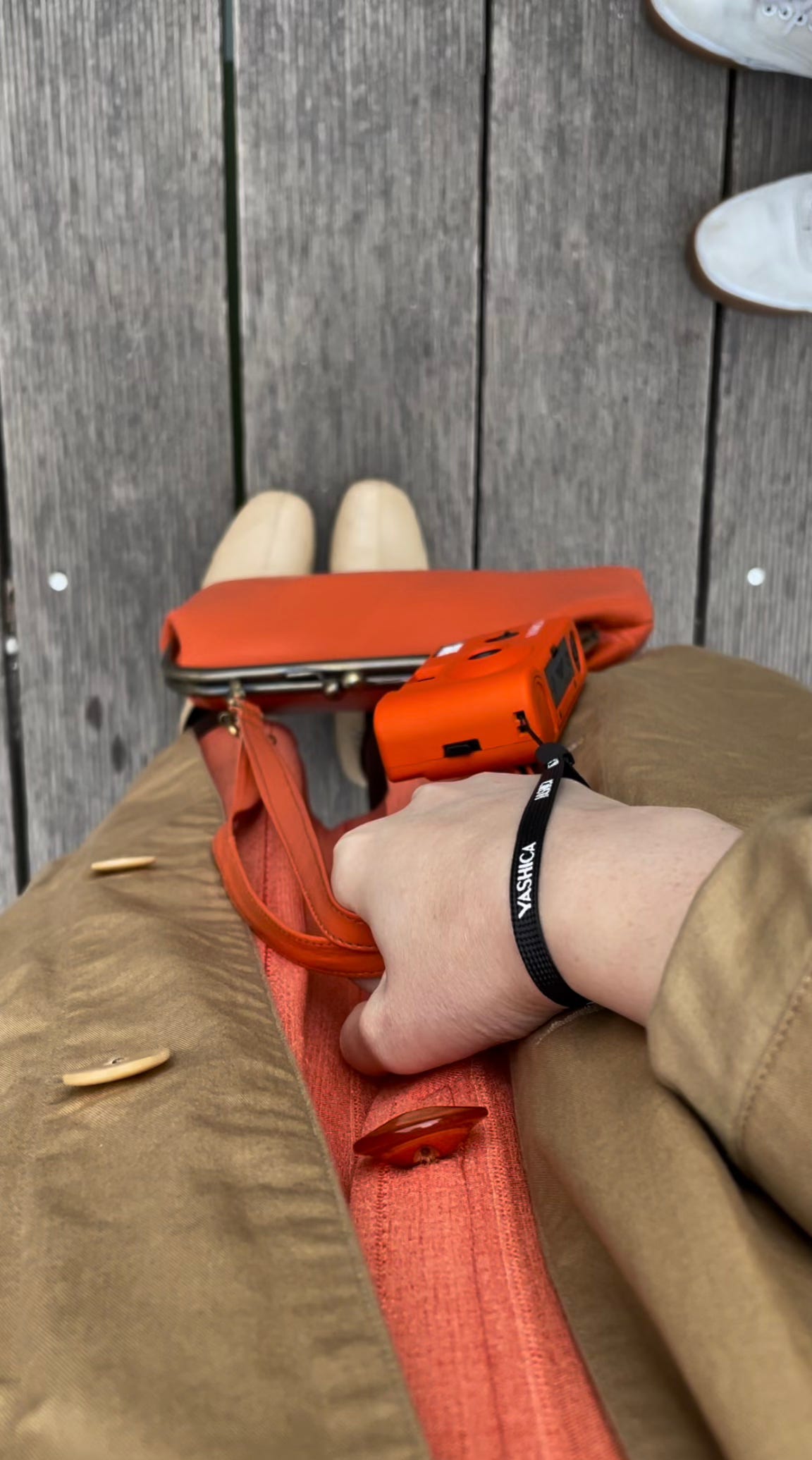
Loved reading this, Kelsey. I'm going to Venice next week and this post has made me so excited for my trip. Your photos are lovely, and I'm glad you had such a wonderful honeymoon. I've marked Marchini Time down in my notes plus your gondolier's recommendation for the best Tiramisu in Venice so grazie mille in advance for that. I'm definitely hoping to hit the Guggenheim Collection - I'll pass on your respects if I find Peggy's grave.
I will never understand people saying that Venice is overrated. Since when is perfection overrated?!
The last time my husband and I visited was maybe 10 years ago and we were broke as hell... I remember being THRILLED that we got free ruffled chips and green olives with our Aperol Spritz everywhere we went. We brought that idea home and still serve cocktails this way, especially during the summer and all our friends lose their minds over it. It's genius.